
Stuffed with rich cheddar cheese and smokey bacon

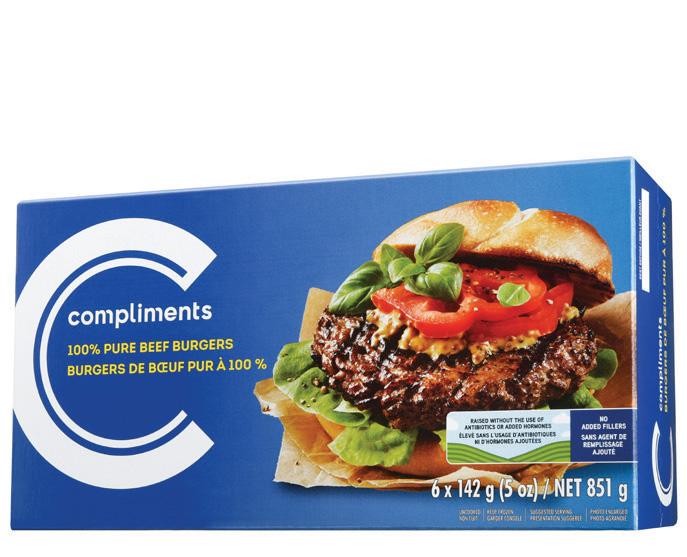

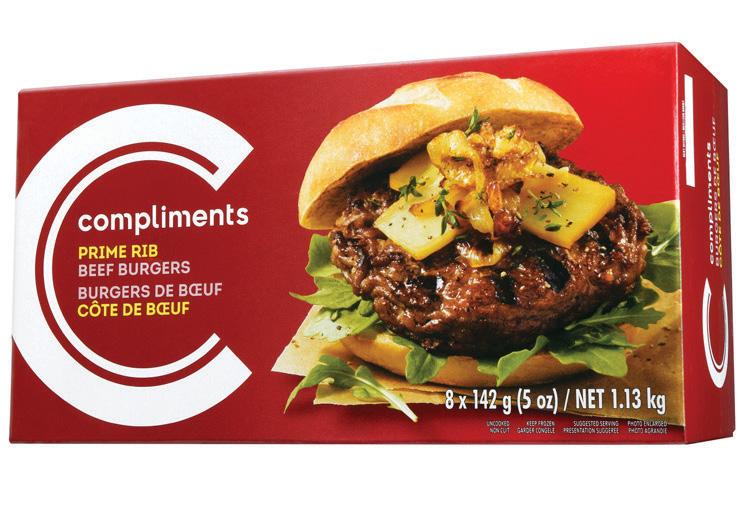
Available at

4
Beyond terroir
What wine can tell us about who we are and what we value by Colleen Thompson
8
Veggies as star of plate
Chef Michael Smith on his new cookbook, gardening, and life at Inn at Bay Fortune by Laurie Wallace-Lynch
10
Serious business of chill
Everything you didn’t know about ice in beverages by Bob Gordon
14
The thrill of the grill
Our 2023 recipe contest winners by Crystal Murray
18
Patio Pleasers
Easy appies for summer gatherings by Crystal Murray
26 Carb Up!
The delicious art of eggs, flour, and water by Colleen Thompson
Good Taste is a special insert in Saltscapes magazine, published by Metro Guide Publishing, 2882 Gottingen St., Halifax, N.S. B3K 3E2. Tel: 902-464-7258, Sales Toll-free: 1-877-311-5877
Contents copyright 2024/2025. No part of this publication may be reproduced without prior written consent of the publisher. Printed in Canada.


On our cover: Patio time calls for delectable snacks.



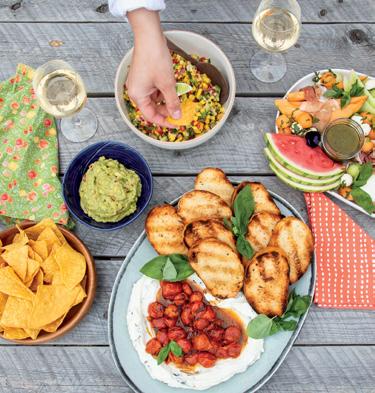




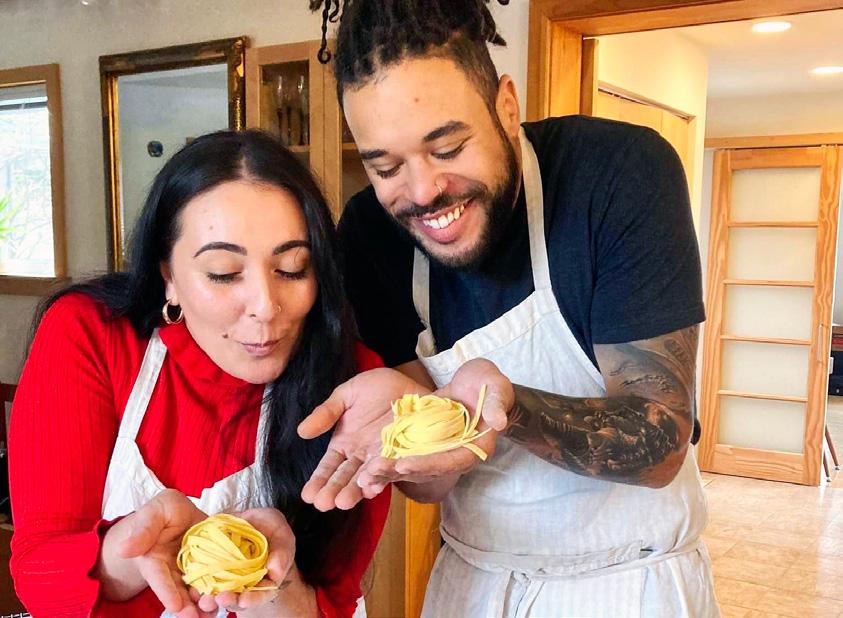
GT 3 GRACIOUS LIVING ON THE EAST COAST
Contents
Photo by Steve Smith, VisionFire
STEVE SMITH, VISIONFIRE
STEVE SMITH, VISIONFIRE COLLEEN THOMPSON NATALIA GARTLEY, HANDSONFRESHPASTA.COM Spring/Summer 2024 GRACIOUS LIVING ON THE EAST COAST G d Beyond terroir What wine can tell us about who we are and what we value Summertime delights! Patio pleasers for easy entertaining The thrill of the grill Our 2023 recipe contest winners 4 10 26 14

Beyond terroir
What wine can tell us about who we are and what we value
Story and photography by Colleen Thompson

Benjamin Bridge winemaker JeanBenoit Deslauriers and indigenous affairs advisor Zabrina Whitman wanted a deeper understanding of the winery’s roots and the land where vines now grow. A unique partnership and allyship began that explored what the term terroir meant in the context of Nova Scotian wine.
It’s a perfect autumn afternoon in the folds of the Gaspereau Valley. The sun glints off rows of vineyards turning shades of crimson and ochre. The gushing Gaspereau River that empties into the belly of the Minas Basin is the calming soundtrack. A scent of burning wood and damp earth hangs in the air, and I’m sipping a crisp, pale gold Benjamin Bridge Riesling. The connection between this land and the wine in my hand is evident, encapsulating all that I know about terroir.
Terroir, in the traditional definition as it applies to wine, is a French word translated as soil. In the larger context,
GT 4
FRESH AND LOCAL
Jean-Benoit Deslauriers, winemaker at Benjamin Bridge.
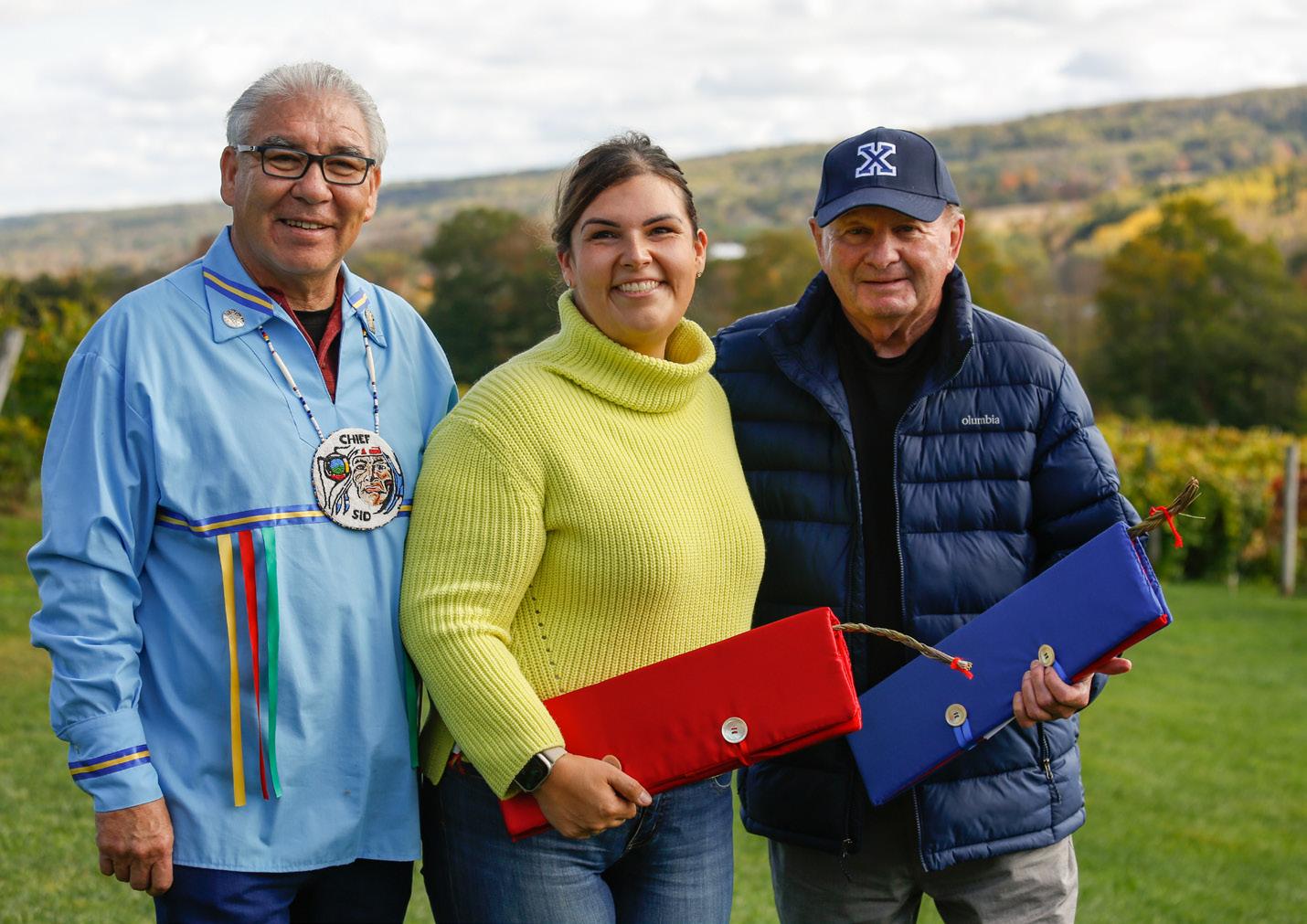
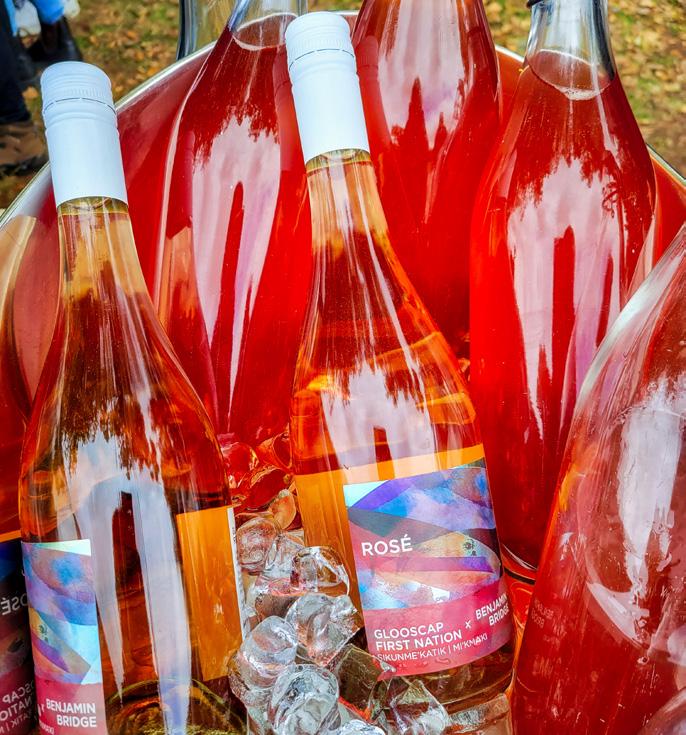

terroir is the specificity of place, which goes beyond the soil. It’s every aspect that goes into differentiating one vineyard from another. Climate, rainfall, microbes, slope, elevation: anything that explicitly shapes a grape’s characteristics. Understanding a wine’s terroir helps us, as wine drinkers, tell wines apart.
But for Benjamin Bridge winemaker Jean-Benoit Deslauriers, something was missing from the definition. “Terroir is the sum of many parts. It’s composed of an entire ecosystem, and its unique signature is conveyed by a sensory experience. As an all-encompassing ensemble, it points to a place and reveals its identity,” explains Deslauriers.
“We knew an entire history existed here before we started making wine,” he continues. “The Mi’kmaw people have been symbiotically part of the environment where our grapes are
grown. It would be arrogant to postulate that it took the planting of European grape varieties (and subsequent winemaking) for the identity of the Gaspereau Valley to be revealed. Clearly, the notion of terroir must extend beyond the sensory experience of wine.”
Considering wine’s focus on place, ecosystem, and community, Deslauriers felt it was ironic he knew so little about the history of the land that now houses Benjamin Bridge Winery. He turned to long-time friend Zabrina Whitman from Glooscap First Nation to find a way to learn more and start a conversation around terroir, heritage, and collaboration.
“I’m the daughter of a horticulturist and the granddaughter of a farmer. Agriculture and supporting our local farm industry is important to me. At the same time, I’ve been raised with strong Mi’kmaw values, like reciprocity and
community,” says Whitman. “There is so much beauty in our culture that everyone must learn about and understand. JeanBenoit and I share that. We recognized that the conversations about food and wine often focused on local, but absent from it was the Mi’kmaq. So, from that foundation, we started brainstorming, and Beyond Terroir evolved.”
That was five years ago. What evolved from the brainstorming was a series of events, where invited guests were steeped in local food and wine, woven together by Mi’kmaw culture and storytelling called Beyond Terroir. A series of culinary stations were set up in different corners of the vineyards, with the recipes created by Benjamin Bridge Chef Kyla Welton and prepared by NSCC culinary students, paired alongside Benjamin Bridge wines.
As diners gathered around fireplaces to eat at each station, Mi’kmaw knowledge holders imparted stories based on the year’s theme around land stewardship, sustainability, and conservation. And where the Mi’kmaw word, Netukulimk, as it pertains to the use of natural resources to ensure prosperity for future generations, was at the core. The relationship between people and land that is integral to Mi’kmaw beliefs resonated with wine lovers.
“It’s everything I believe in,” says Whitman. “It’s about coming together and learning from each other, and it’s founded on a Mi’kmaw word, msit no’kmaq, meaning we’re all related. Everyone who participates and donates to Beyond Terroir believes in these same values. And everyone is so humble. We do it because we want to invest in the wellbeing and holistic success of Glooscap. In a society where money dominates, it’s remarkable to see an experience that is the antithesis of this.”
Benjamin Bridge and Glooscap First Nations developed a collaborative wine over two vintages as part of the Beyond Terroir concept. The wine is a classic Provençal-style rosé, and Deslauriers and Whitman, plus other senior members of the Glooscap council, including wine aficionado Chief Sidney Peters, collaborated, paying careful attention
GT 5 GRACIOUS LIVING ON THE EAST COAST
Clockwise from top: Chief Sidney Peters, Zabrina Whitman, and winery owner Gerry McConnell; crab simmering over an open fire; the new wine with its custom-designed labels.
FRESH AND LOCAL
Lobster with Charred Corn Salad & Squash Purée
Serves 4
2 lbs (1 kg) cooked lobster meat
1 pint (340 gm) ground cherries, halved
4 cobs fresh corn
2 butternut squash, halved lengthwise
4 tbsp (60 mL) sunflower oil
½ cup (125 mL) butter
¼ cup (60 mL) maple syrup
1 lemon
1 tbsp (15 mL) fresh thyme, chopped
2-3 tbsp (30-45 mL) fresh dill, chopped, plus a few sprigs for garnish
2 tbsp (30 mL) fresh parsley, chopped
1 cup (150g) feta salt and fresh cracked pepper
Preheat oven to 375F/191C. Drizzle squash with oil and put cut-side down on the lined baking sheet. Roast for 30-40 minutes.
While squash roasts, grill corn cobs until fully cooked, allowing for char marks. Once cool, slice off corn kernels and combine with ground cherries, parsley, and 2 tbsp sunflower oil; mix and season to taste with salt, pepper, and a squeeze of lemon juice; set aside.
Once squash is roasted, scoop out into a bowl, and add 6 tbsp (90 mL) butter, maple syrup, salt, and mash or purée in a food processor. Adjust seasoning to taste.
In a saucepan over medium heat, melt 4 tbsp (60 mL) butter. Add thyme and cooked lobster meat, reduce heat, and stir to warm gently. Once warmed, add in dill and a squeeze of lemon, and adjust the seasoning to taste.
To serve, add squash purée to the plate, top with corn salad and lobster meat, sprinkle with crumbled feta, top with fresh cracked pepper and garnish with fresh dill sprigs.


to every aspect of the wine from varietal selection to label design.
“On label design elements, we tried to consider First Nations in the whole design, incorporating deep reds and soft blues reflected in the Bay of Fundy. We also specifically wanted something with low sugar. Diabetes is high in our communities, and so often, diabetics cannot drink wine unless they’re dry. These small details that went into the wine make it special,” says Whitman.
The wine is made from a blend of pinot gris, gamay, riesling, and ortega grapes grown in vineyards along the Sikunme’katik (Gaspereau River) and located in Kepukwitik, one of the seven districts of Mi’kma’ki, the traditional land of the Mi’kmaq. The 2022 vintage, available now, is a pale salmon-pink coloured wine with a refreshing, crisp palette. The result is a wine that
GT
6
FRESH AND LOCAL BENJAMIN BRIDGE
exhibits its unique environment and represents its heritage.
“One could argue the wine was never central to this project as a cultural learning opportunity,” says Deslauriers. “We made it a point for the wine to remain a modest, effaced, and optional touch. But, as a commercial winery with a presence in our community, our resources and platform cannot be dissociated from our wines. In that regard, I think the primary role of our wines would have been as a facilitator of visibility. Beyond that, our wines also contributed to the sensory experience of our guests as curated pairings to the traditional culinary creations, a cultural fusion capturing the spirit of our allyship.”
One lesson that particularly stood out for Deslauriers was a perspective on the immense scope of the Mi’kmaw presence on the land. “The Mi’kmaq have been present in the Gaspereau Valley for at least 13,000 years. Countless aspects of Maritime culture have roots in Mi’kmaw culture, but often appropriated or under a colonial veil, impossible to remove without interest or opportunities to connect with traditional knowledge,” says Deslauriers.
Too often, winery narratives about the terroir and history of wine are told from the producer’s perspective. When overlooking the past, the wine industry loses valuable and intrinsic knowledge that defines a true sense of place. With this wine, storytelling has resonated, and wine buyers and drinkers have joined Benjamin Bridge on a journey to a better understanding that we are all guardians of this ancient land. And if Nova Scotian wine is going to reflect its true terroir, it must involve First Nations.
“Reconciliation means listening to Mi’kmaw and Indigenous voices. We know what healing means for our people,” says Whitman. “Our ways not only have value for us, but we also have a lot to teach others how to live life more respectfully and balanced.”
Crab with Roasted Sunchoke, Pear and Hazelnut
Serves 4
2 lbs (1kg) cooked crab meat, shredded
4 lbs (2kg) sunchokes or fingerling potatoes, cut into 1-inch pieces
4-5 tbsp (60-75 mL) creme fraiche
1 pear, diced
2-3 tbsp (30-45 mL) sunflower oil
3 tbsp (45 mL) butter
2 tbsp (30 mL) honey
1 1/3 cups (200g) hazelnuts
½ lemon, juice, and zest ¼ cup (60 mL) fresh parsley, chopped salt and pepper to taste
Line a baking sheet with parchment and toast hazelnuts in a single layer for 10-15 minutes at 350F/180C, until golden brown. Remove from oven and place hazelnuts in a clean tea towel, wrap and let steam for 1 minute. Using
the towel, gently remove the skins and rough chop.
Toss sunchokes in sunflower oil, season with salt and pepper, and place on a lined baking sheet. Roast until golden brown, around 10-15 minutes.
While sunchokes are roasting, warm a saucepan over medium heat. Add butter, and once melted, add crab meat. Turn heat down to mediumlow, and gently stir until the crab is warmed. Add creme fraiche, honey, pear, parsley, and lemon juice. Season with salt and pepper. Adjust taste to preference with honey, creme fraiche, lemon, salt, and pepper.
Serve alongside roasted sunchokes or fingerlings and top with toasted hazelnut. Pair with a crisp, aromatic white and a seasonal salad.
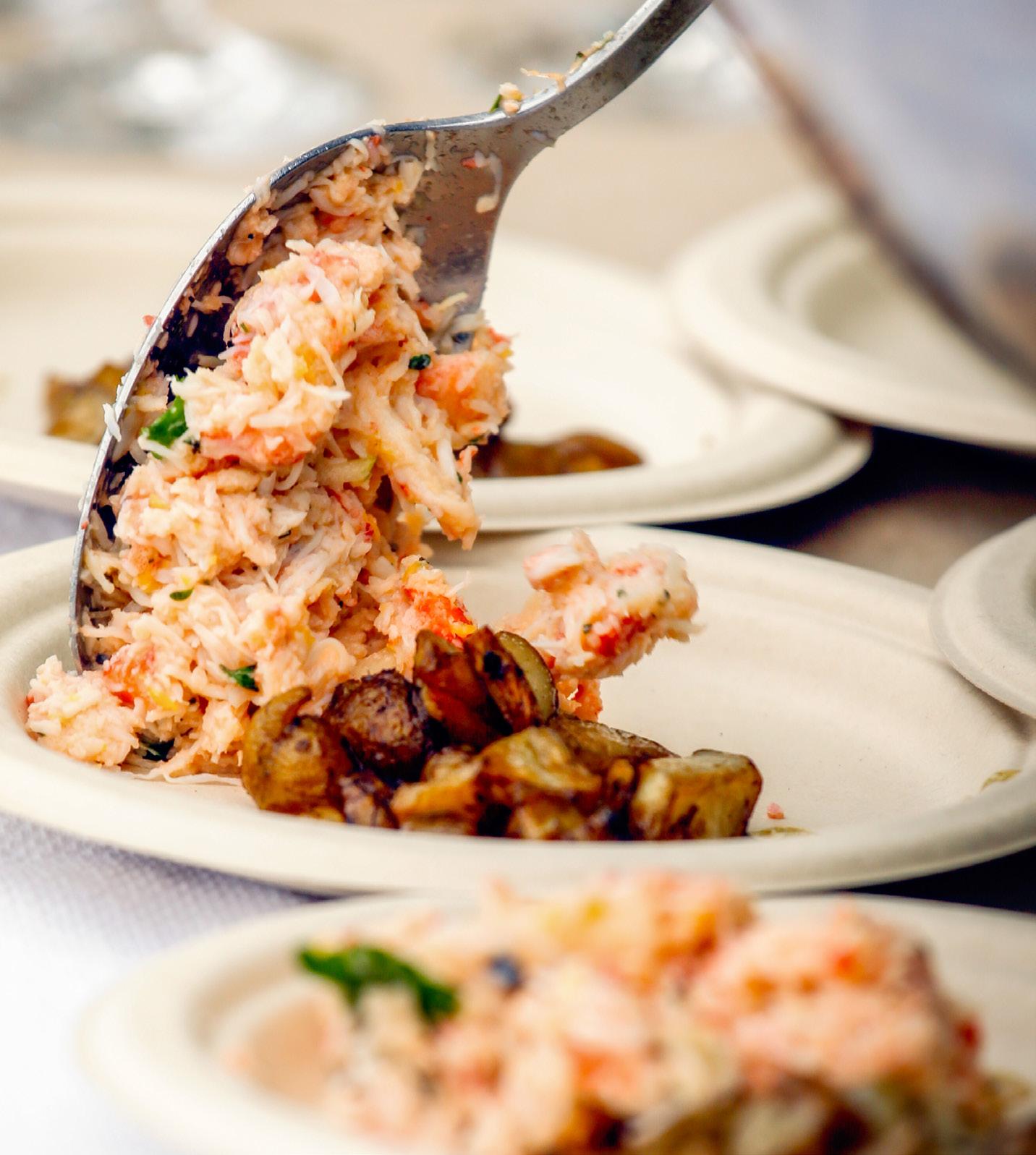
GT 7 GRACIOUS LIVING ON THE EAST COAST
FRESH AND LOCAL
Veggies as star of plate
Chef
Michael
Smith on his new cookbook, gardening, and life at Inn at Bay Fortune
By Laurie Wallace-Lynch
When renowned Chef Michael Smith starts talking about his Culinary Farm at his Inn at Bay Fortune in P.E.I., you can hear the excitement in his voice. He says his threehectare culinary farm was the inspiration for his new cookbook Farmhouse Vegetables: a Vegetable-Forward Cookbook (Penguin Random House).
The culinary farm supplies all the produce for Smith’s FireWorks Restaurant at Inn at Bay Fortune. The farm part of the property features several greenhouses, an experimental garden, a mushroom patch, apple orchards, and immersive forest trails.
“The goal is to achieve sustainable, regenerative agriculture,” says Smith. “There are 47, or is it 56, raised beds cascading down our property. Just being surrounded by all that is wildly inspiring, and that’s what we set out to highlight in the book.”
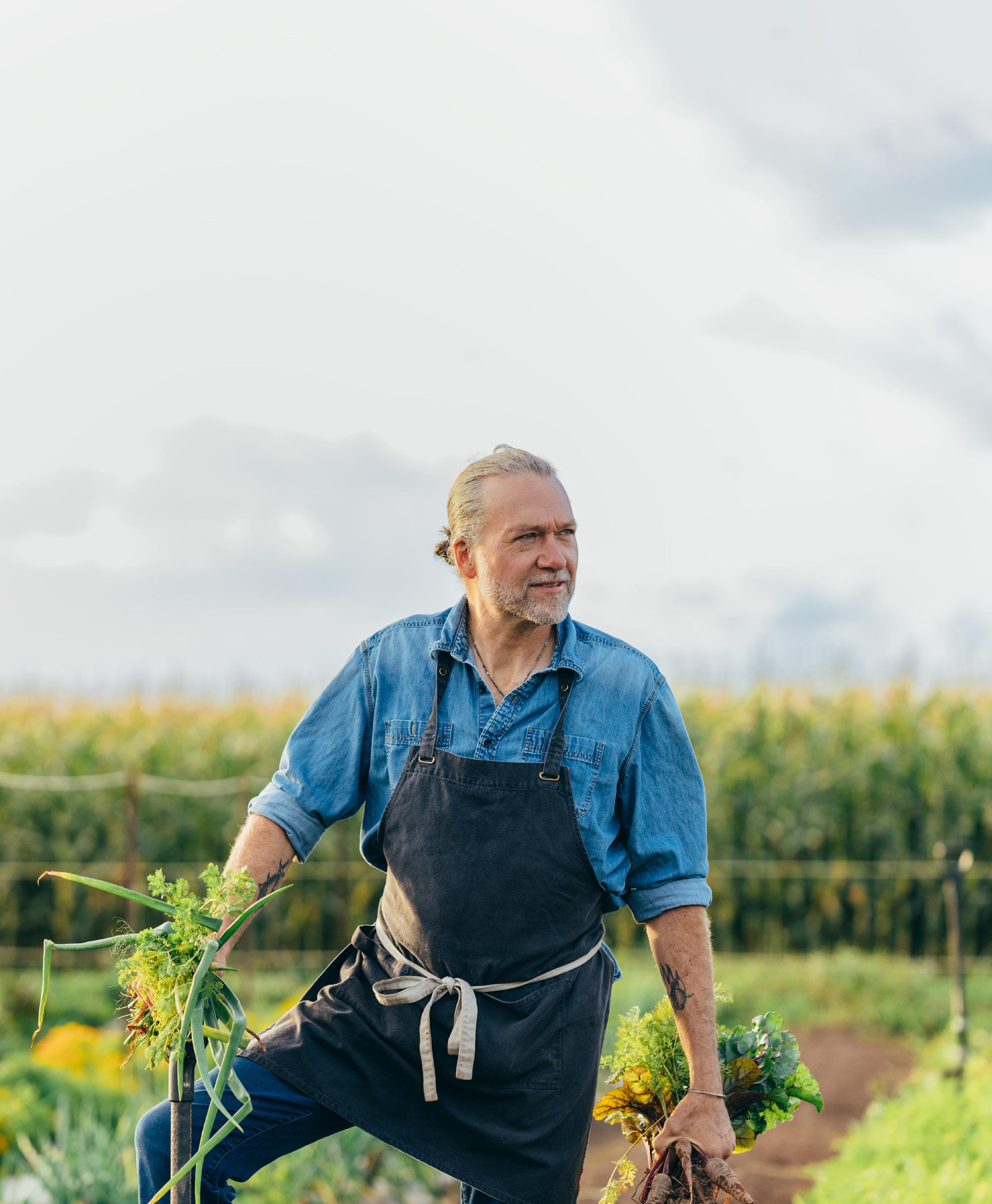
Farmhouse Vegetables is a hefty hardcover cookbook packed with vegetable-forward recipes. Asparagus, beets, spinach, leeks, zucchini, corn, sprouts, squash; you will find recipes for these vegetables and more. A few must-try dishes include Asparagus Dill Frittata, Cauliflower Mac ‘n Cheese, and Pan Roasted Cauliflower, Leek and Apple Cinnamon-Crusted Pork Tenderloin.
“This is not revolutionary or new, but I hope that people will be inspired to eat more vegetables,” says Smith. “What’s the message? Eat more vegetables!”
The chef has two tips to encourage that: “Strive for diversity. Strive to add
GT 8
CHEF PROFILE
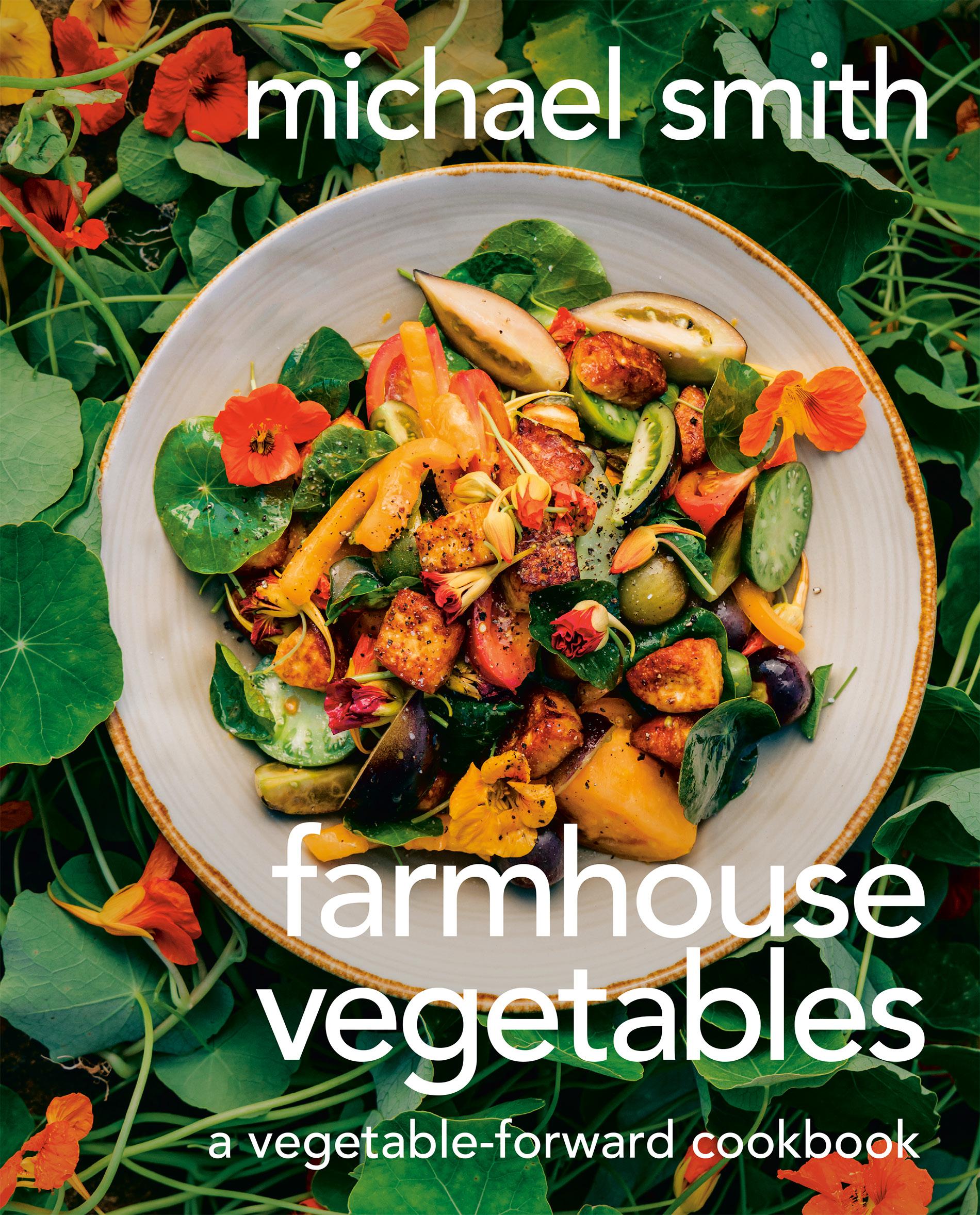
one new vegetable every month. Go to a farmers market or fresh market where you can look someone in the eye who grows the vegetables. Just watch how that changes your respect for cooking vegetables. Then look at the book and find what resonates.”
Farmhouse Vegetables is the 12th cookbook from Smith, who’s also a member of the Order of Canada, Prince Edward Island’s Food Ambassador, and former Food Network host and judge.
Michael and his wife Chastity bought and renovated the Inn at Bay Fortune 10 years ago. It’s a family affair, as children Gabe, Ariella, and Camille all pitch in.
“When we bought the place, we set off with this grand plan and the idea was, we are going to grow everything we serve, we are going to make a farm, and we are going to cook it all with live fire,” explains Smith.
On that journey, he’s learned a lot.
“Through all that work we’ve come to understand the power of shared communal experiences,” he adds. “And that goes with the values that came with me from all those years of cooking for my family, my friends, and travelling the world. The best times were having fires in my backyard with all my buddies around. That’s what Chas and I wanted
Farmhouse Vegetables: A VegetableForward Cookbook by Michael Smith. Published by Penguin.
to express through the restaurant. The property is enormously successful, and 100 people work with us each summer … We have figured out how to have a good day ourselves and then share that day with our guests.”
Each year Smith and his culinary team host a FireWorks Feast from midMay to October. The innovative and immersive dining experience has become one of the region’s top farm-to-fork culinary experiences.
“The FireWorks Feast begins at 4 p.m. with a tour,” says Smith. “When guests arrive at the Fire Garden, they enjoy a one-hour tasting. There’s every kind of fire known to man, we have 15 different types of fires out there. There are drink stations, app (appetizer) stations, a taco bar, and oyster hour featuring fresh oysters from the bay right in front of the restaurant. Last year we shucked 65,000 oysters.
“Then we all come together and raise our glasses and sit down for an epic sevencourse feast. That’s of course communal, sitting at long butcher block tables overlooking Bay Fortune. The evening concludes with fireworks and homemade marshmallows on the front lawn. It’s an epic culinary experience that guests will always remember.”
Although the renowned chef has travelled the world on his culinary journey, he says home is his happy place. Chef Smith returns to television with the launch of his new series called Chef on Fire with six episodes airing on Bell Fibe TV. The new series will focus on the food, festivities, gardening, and life at Inn at Bay Fortune as Smith proudly shares a slice of P.E.I. paradise with viewers.
GT 9 GRACIOUS LIVING ON THE EAST COAST
CHEF PROFILE AL DOUGLAS
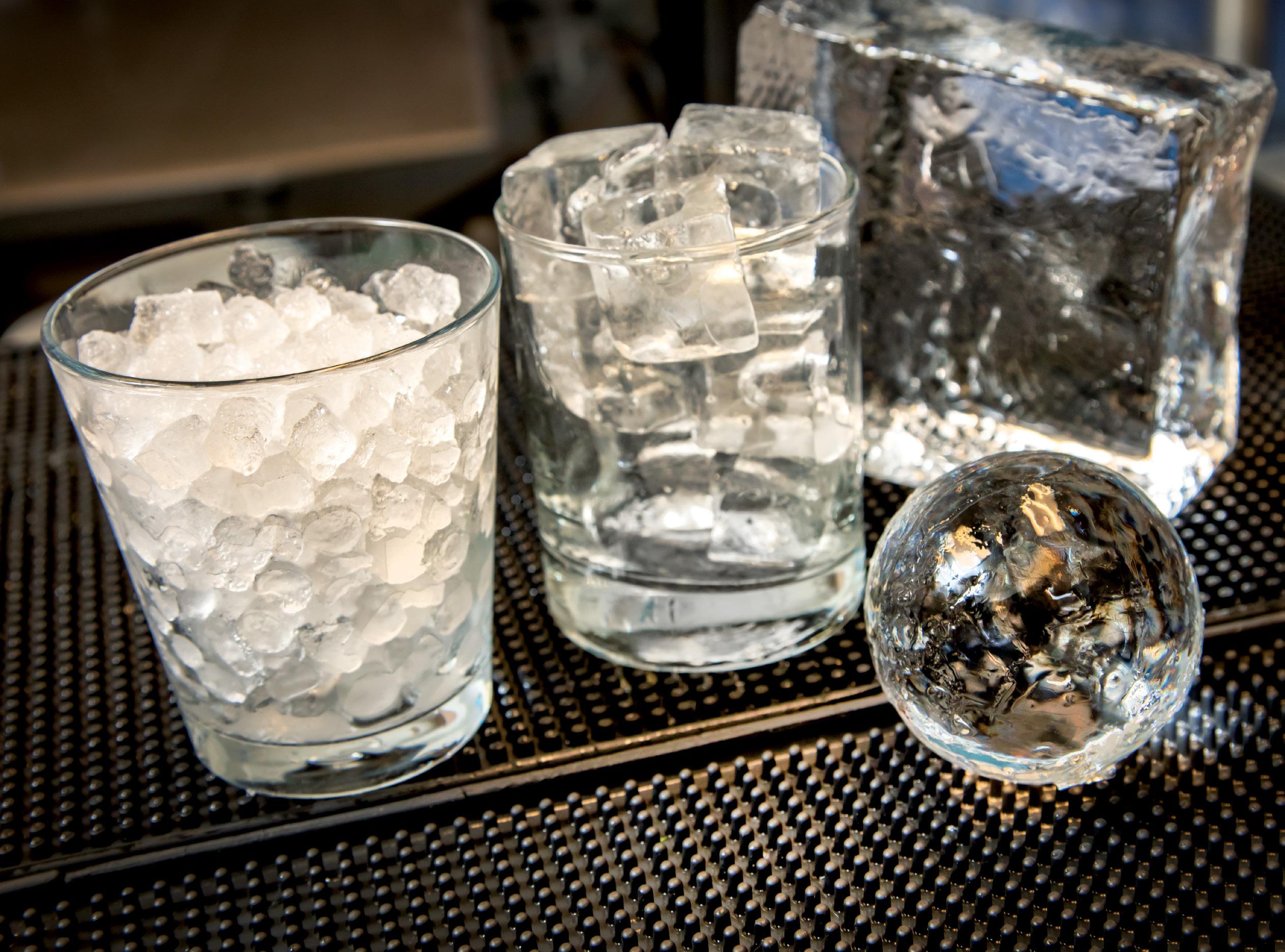
Serious business of chill
Everything you didn’t know about ice in beverages
By Bob Gordon
Photography by Steve Smith, VisionFire
Two centuries ago, every East Coast community had an ice house and an army of icemen delivering 50-pound blocks weekly. Before electrification, ice was essential to refrigeration and all but unknown in tropical zones.
Today, ice is so commonplace we give it hardly a thought. Take a cocktail, a Manhattan, a Rob Roy, or a humble 7 n’ 7 on the rocks. The whiskey matters, be it Glen Breton Rare or Slàínte Mhaít Single Malt Whiskey. But, how much thought goes into the rocks, the ice cubes?
At the dawn of the 19th century, Frederic Tudor of Massachusetts pioneered the shipping of ice to southern climes, becoming fabulously wealthy and earning the moniker the “Ice King.” He
also ignited an ice cream craze in Cuba that persists. “Helado por el pueblo” (ice cream for the people) was one of Castro’s revolutionary slogans, and ice cream vendors still patrol the streets of Havana.
In 1821, Frederic dispatched his youngest brother to New Orleans to introduce ice to the U.S. south. Harry wowed bartenders there with the “Gin Smash” (gin chilled and shaken over ice, poured over fresh mint and syrup), forebearer of the bourbon-based mint julep. Cocktail connoisseurs greeted the chilled concoction with delight. Soon, daiquiris, highballs, martinis, and a host of chilled cocktails were all the rage.
Ice author Amy Brady writes, “Harry and the ice he sold had changed the city, and cocktail culture, forever.” Sommelier
and P.E.I.’s Red Island Hospitality general manager Ameya Sharma summarizes the importance and nature of ice’s dual role in a cocktail: ice chills a cocktail while diluting it. The proper ice for a particular cocktail offers the correct balance of these two effects and that, in turn, is determined by the ice’s size and shape. Ice is as important to a craft cocktail as the three fundamentals: the base (liquor/liqueur), the modifiers (mixes/additives), and the garnish.
Ice in a cocktail can even have an aesthetic impact. P.E.I. sommelier Lesley Quinn, fondly recalls an “Espresso Negroni that featured a gorgeous cube that came complete with the (Vancouver) club’s monogram stamped into it.” Alternately, ice can be
GT 10
DRINKS
coloured. Indeed, one can even have a cocktail in ice, courtesy of specialty shot glasses made of ice.
And all of this brings us to Garth Brown, award-winning restaurateur and culinary management instructor at Nova Scotia Community College. He is willing to “argue that ice is the most important component of a cocktail.” It has to be clear, hard, and free of impurities. This requires filtered water and directional freezing.
Directional freezing is the key to quality ice. Left to its own devices, in an ice cube tray the cubes freeze from the outside in, trapping air bubbles and impurities in the cube. The former make the ice appear cloudy, the later can alter a cocktail’s taste, texture, and mouth feel. Directional freezing involves freezing ice from the top down, pushing impurities and air bubbles down. The result, with the dirty ice on the bottom cut off, is pure, clear, hard ice, ideal for cocktails. To this end, the NSCC deploys a variety of ice machines that make blocks and cubes of assorted sizes.
At The Clever Barkeep in Dartmouth, N.S., co-founder and mixologist Jeff Van Horne admits to “being passionate about ice.” He has two ice machines producing cubes and pebble ice, and also make blocks that are cut into appropriate sizes and shapes. He describes cutting the blocks as “mesmerizing,” and great entertainment. Like Brown he sees ice as fundamental to a cocktail, as important as the base alcohol.
Presiding over a beautiful bar fashioned from the St. John the Baptist Church’s organ and 10 pews, at Kakutera (Japanese for cocktail lounge), Saint John, N.B., mixologist Eric Scouten considers ice so important that he also makes his own. The blocks of ice are then shaved, chipped, crushed or cubed to appropriately complete his seasonal craft cocktails that feature local, and often foraged, ingredients. Excellent ice, according to Scouten, requires “honing fundamentals and mastering techniques.” The key, as always, is directional freezing.
Ice is both art and serious business. Pebble ice in a shaker will chill quickly while a rolling shake with cubed ice will knock the corners off, creating flakes.



GT 11 GRACIOUS LIVING ON THE EAST COAST
Above: Garth Brown believes that ice is the most important component of a cocktail. Below: mixologist Eric Scouten also makes his own ice for his cocktails at Kakutera in Saint John, N.B.
DRINKS NAOMI PETERS FACEBOOK/KAKUTERU LOUNGE

A Collins glass calls for a tall cylinder of ice while an old fashioned calls for large rocks that chill without diluting and “calm the heat,” according to Brown. In any craft cocktail the ice should be pure, clear and hard. Its size and shape must
pair with the ingredients, balancing chilling and diluting.
The final word belongs to P.E.I. sommelier Sharma, “Good ice can heal a breaking drink and bad ice can break a healing one.”

Better Ice at Home
• Use any recommended method, but always directional freeze –from the top down. You can find lots of great tips for directional freezing on line, or talk to your favourite mixologist.
• Bag your ice so it doesn’t pick up odours.
• Don’t scrimp on ice. Fill the chilled shaker with ice, chill the glass, and use the appropriately sized and shaped ice.
• Freeze a block and cube it in front of your guests. It’s great party entertainment, according to Jeff Van Horne.

GT 12
Jeff van Horne is "passionate about ice."


LOOK FOR US AT YOUR SOBEYS ATLANTIC LOCATIONS

illy coffee 13615-13619


Hot Kids
13632-13019
Oven baked low fat rice and sesame crackers with a great taste
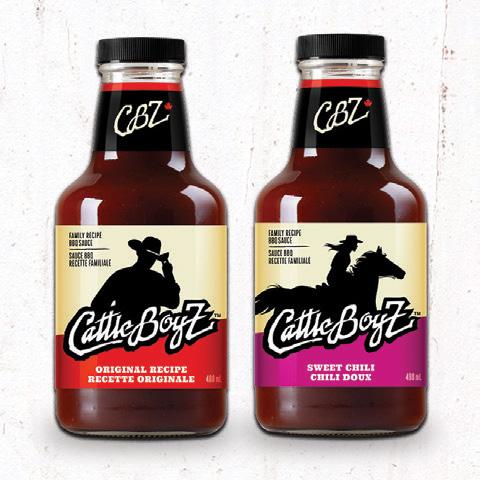
Cattleboyz Original BBQ Sauce 490ML 12643
Cattleboyz Sweet Chili Sauce 12644
Award-Winning BBQ Sauces
Quality loves detail: High Quality Italian Coffee!

M’Lord Whole Lychees 560ML 12096
M’Lord Pitted Bing Cherries 398ML 12097



Haiku Rice


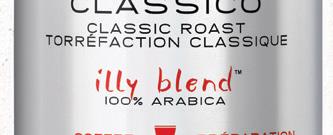






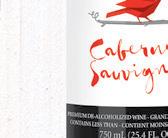
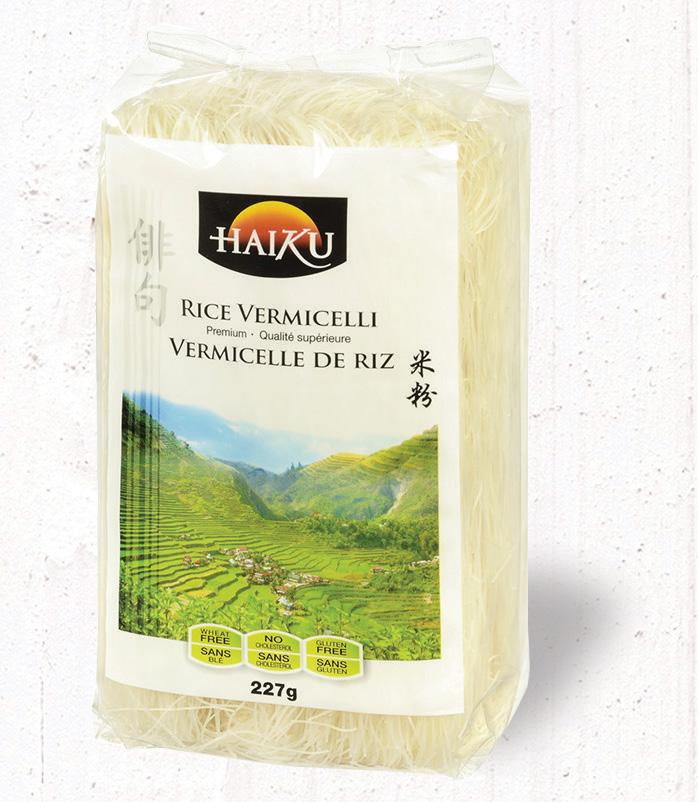
Vermicelle 227g 12504
HAIKU offers a complete line of Asian products, based on … INNOVATION, QUALITY AND AUTHENTICITY
Raos Marinara Sauce 660ML 13641
Rao’s Marinara Pasta Sauce makes every day delicious!


Our products delight everyone from award-winning chefs to home cooks alike because of the unwavering quality that is synonymous with the M’LORD brand.

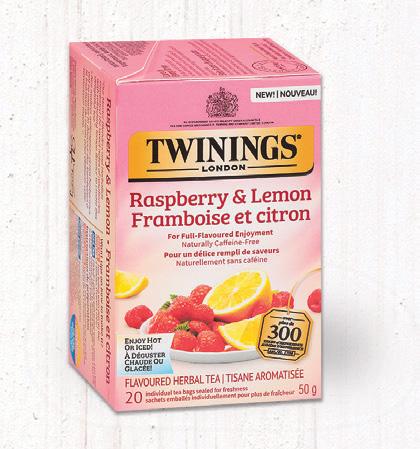
Twinnings Raspberry & Lemon Tea 13758
Full-fl avoured enjoyment!

Great Gentleman

13766-10723-13212


Look for something extra; the spice, the fruit, the zing. In our quest to mix and match fl avours, colours, moods, and people, we create something completely unique or improve on traditions


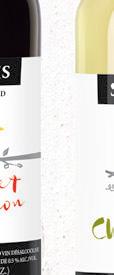
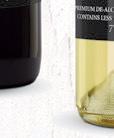






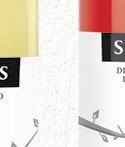

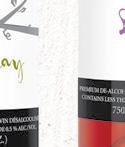
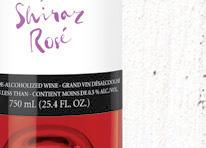


St.Regis



12860-12861-12862
Skillfully crafted wines, without the alcohol and less calories

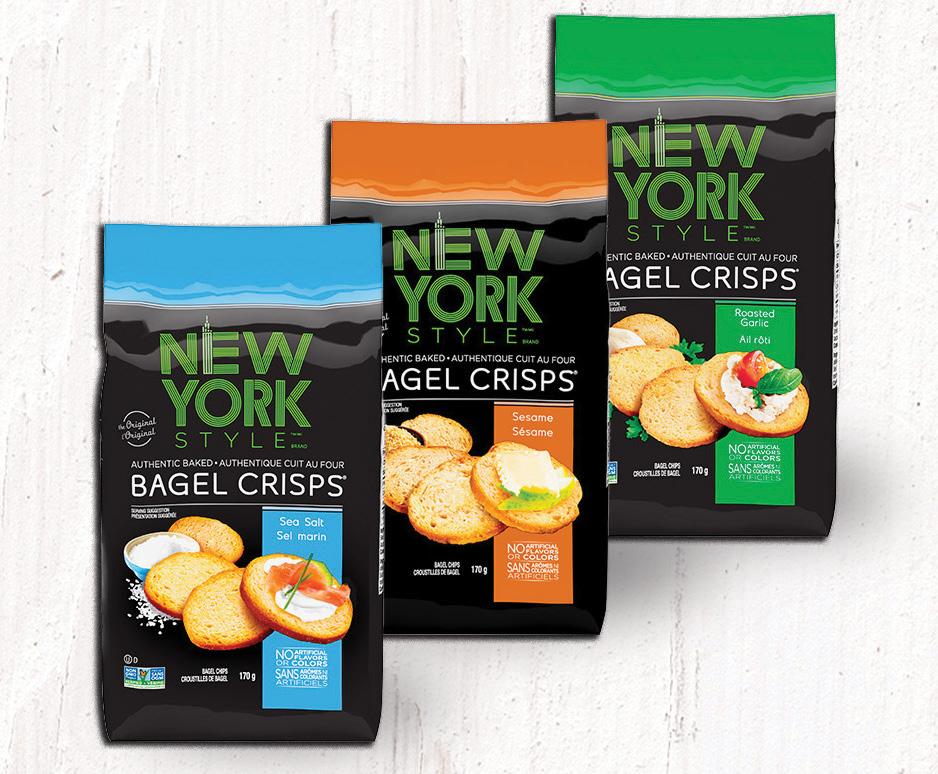
New York Style Bagel Crisps 12856-12857-12858
THE THING TO BRING™, it’s not just a snack, it’s an experience
Find us at your local
SALTSCAPES RECIPE CONTEST
The thrill of the grill
Our 2023 Recipe Contest winners
Story by Crystal Murray
Photography by Steve Smith, VisionFire
The Saltscapes recipe contest this year was a great way to welcome back our East Coast love of cooking and dining alfresco.
We challenged home cooks to share their favourite grilling recipes and whittled the entries down to three tasty classics that are quick to prepare, getting you out of the kitchen and on to your patio to enjoy a sweet summer evening with family and friends.
To test the recipes, Saltscapes enlisted catering chef Erin Pettipas. She packed up for a little road trip to Fossil Farms Ocean Retreat in Merigomish, N.S., where a fantastic farm kitchen with all the fixings was there for her to try the recipes, and get Fossil Farm Chef Brad Saunders’s help picking the winner.
Both judges enjoyed the simplicity of the recipes and how little ingredient swaps could make these into a cook’s signature dishes.
FIRST PRIZE Grilled Basil Chicken
Submitted by Amanda Preston-Penny Dipper Harbour, N.B.
Home cook Amanda Preston-Penny loves this grilled chicken recipe for its juiciness and tenderness. She makes her own yogurt, cheese, and salad dressing — an added investment in time that pays off in flavours and storytelling.
Chef Erin Pettipas used goat cheese and asparagus that paired well with the sweetness of the basil and honey. Chef Brad says he liked the versatility of this recipe and the opportunity for creativity.
Recipe per individual serving 1/4 or 1/2 pound (125-to 200 grams) boneless chicken breasts or thighs
2 tbsp (30 ml) plain or lemon greek yogurt
1 tbsp (15 ml) honey mustard salad dressing
2 fresh basil leaves
Filling for each serving
Try any one of the following vegetable or fruit options:
1 or 2 mushrooms or 1 spear of asparagus or 1 or 2 parboiled carrot sticks or 1 or 2 apple slices or ¼ cup (60 mL) blueberries, and if desired, a thin cheese of slice.
Pound the boneless chicken breast as thin as possible so they cook faster. If they are particularly thick, you can precook them in the oven at 400F (218C) for 15-20 minutes but since we are trying to keep the oven off, do your best to flatten them for quick grilling.
If there is skin on the chicken, place this on the bottom and lay flat. In a bowl mix salad dressing and yogurt. Spread evenly on the chicken. Place two fresh basil leaves on the yogurt.
Add filling and, if using, cheese. Roll the chicken into circles, carefully overlapping the edges so the filling is in the centre. It’s best to overlap about one cm, cooking with the overlapped piece down on the grill, which will sear the pieces together.
Coat each roll with a little oil before putting on the grill. Use a thermometer to ensure chicken is fully cooked. Baste the rolled chicken breast with more salad dressing or barbecue sauce.
“I usually serve with a salad or corn on the cob depending on what is available,” Amanda says. “I buy most of my products at the local farmers market or Sobeys. I make my own yogurt, cheese, and salad dressing, but in-store products work well, so no need to make these if you are rushed for time. Many of the products I buy are local, especially wild blueberries.”
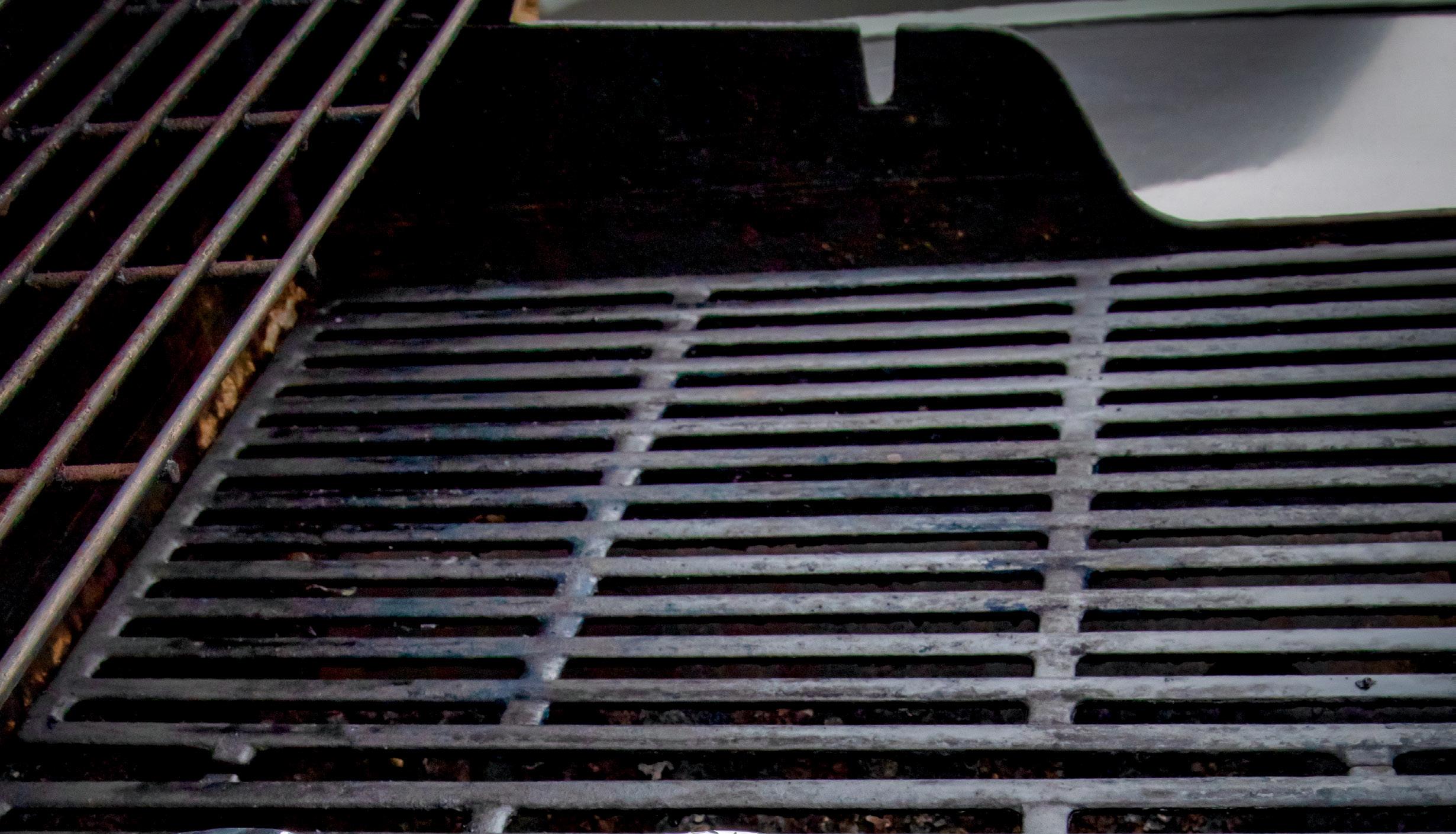
GT 14
SALTSCAPES RECIPE CONTEST
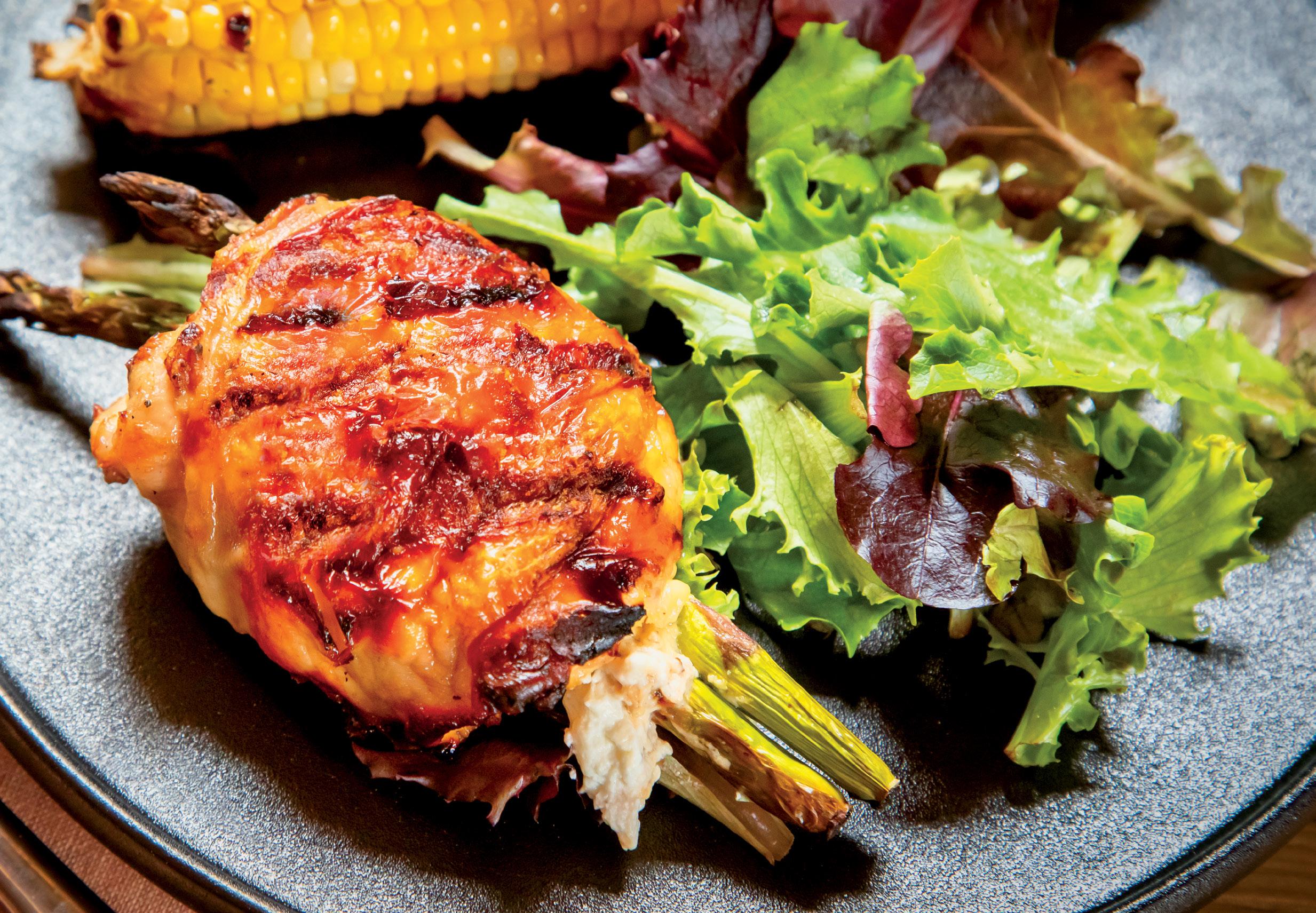
FIRST PRIZE
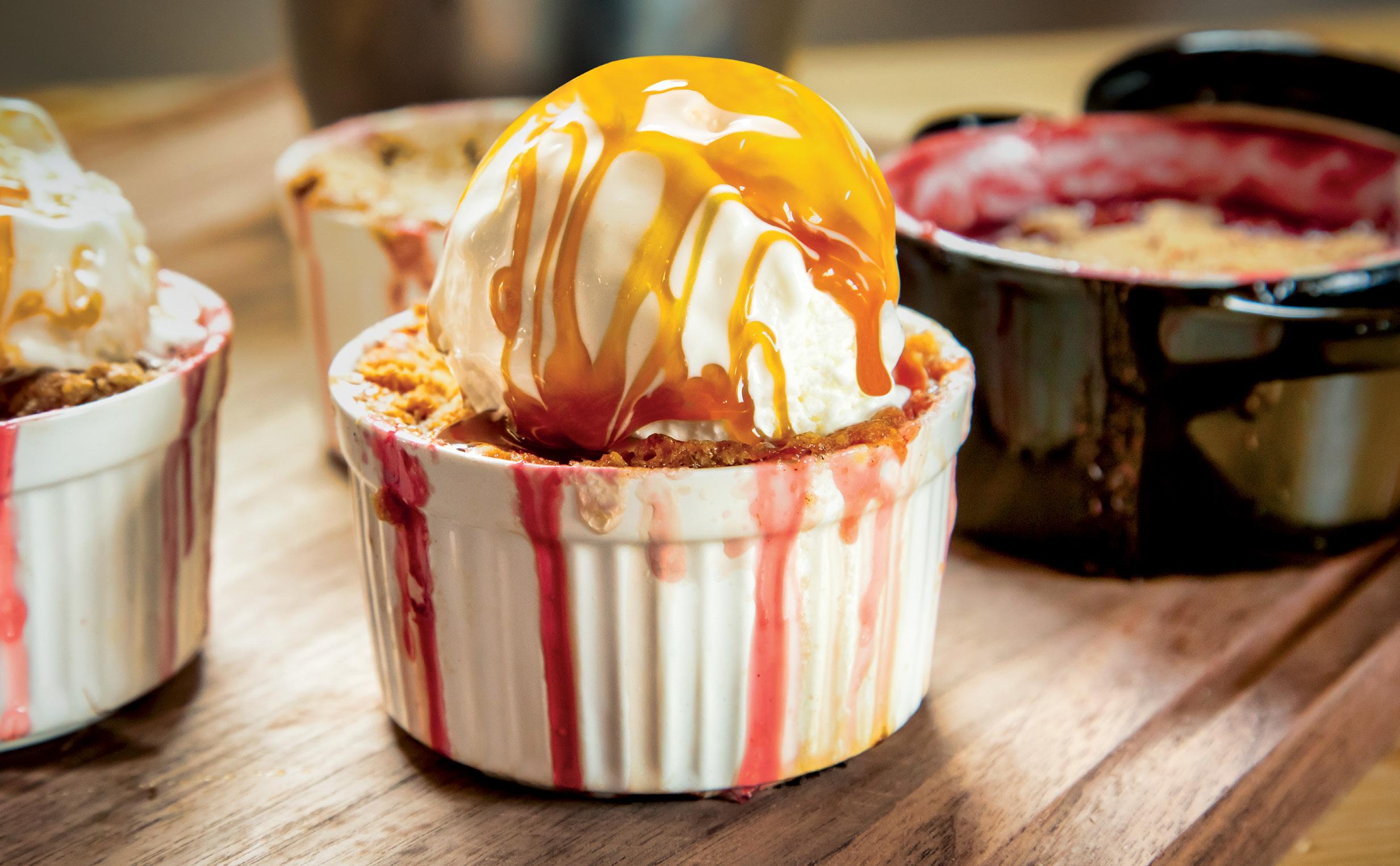
SECOND PRIZE
GT 15 GRACIOUS LIVING ON THE EAST COAST
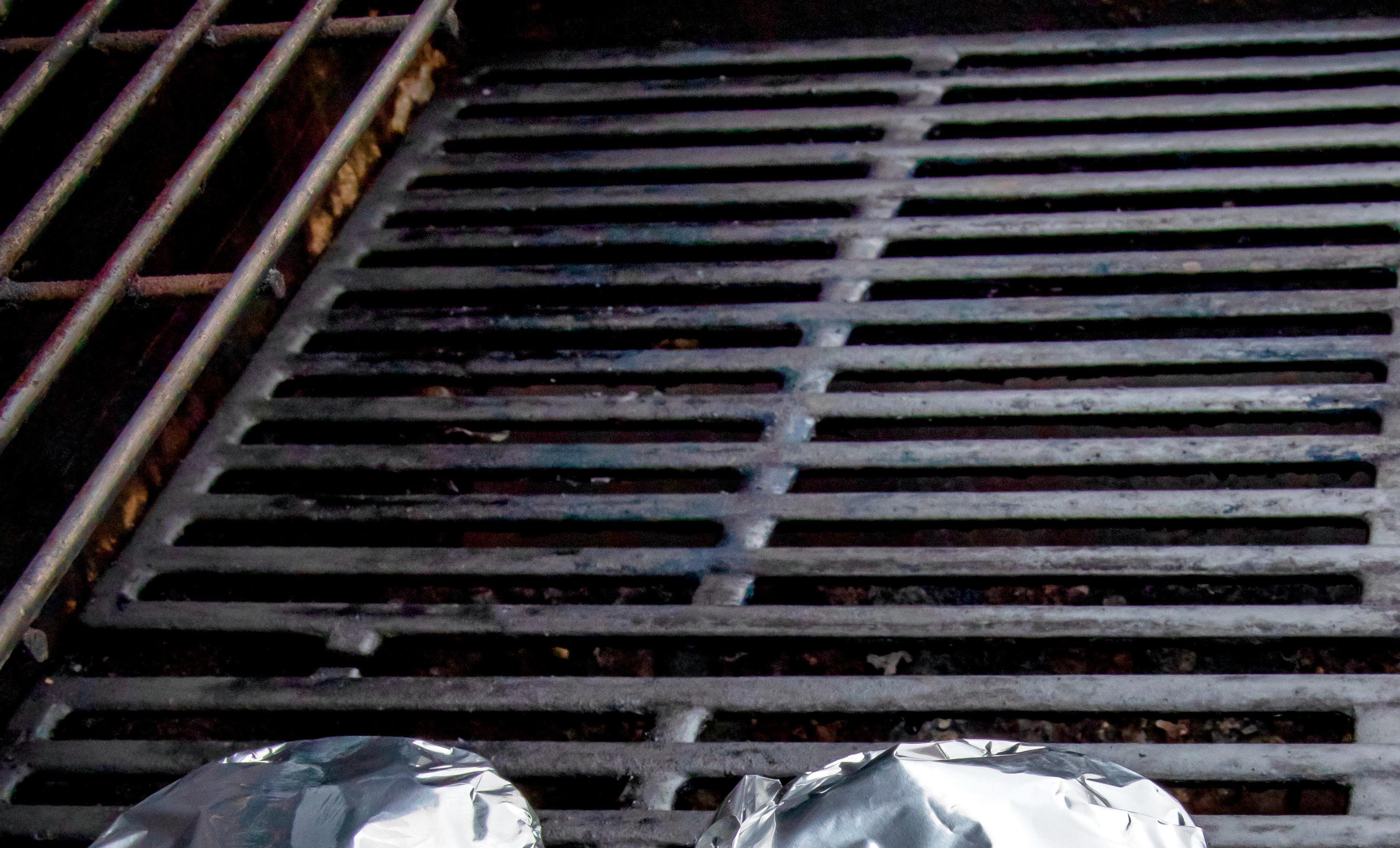
SECOND PRIZE Fruit Berry Crumble Serves 4
Submitted by Nova MacIsaac Rollo Bay, P.E.I.
Most home cooks have their go-to crumble recipe. What sets this recipe apart is the idea to bake on the grill and a family food story that makes this classic dish a favourite for many.
Chef Erin says baking the ramekins on the grill was a fun way to prepare this dish and an example of how you can cook a whole meal outside if you don’t want to turn the oven on. Chef Brad added that if you wanted more of a smoky flavour for this dessert, to fire up the charcoal barbecue for an elevated grilled experience.
Bottom layer
4 cups (1 litre) chopped mixed fresh fruit: apples, pear, blueberries, rhubarb (fresh, or if frozen, thaw and pat dry), peaches — any fruit you like. Wash and peel all apples, pears if desired.
Second layer
Make a slurry of:
1 cup (250 mL) cold water
2 tbsp (30 mL) corn starch
½ cup (125 mL) white sugar
1 tsp (5 mL) pure vanilla
Third Layer Topping
Make a crumble by combining the following:
1 cup (250 mL) flour
3/4 cup (185 mL) oats
1 cup (250 mL) brown sugar
1 tsp (5 mL) cinnamon
¼ cup (60 mL) ground walnuts
1 tbsp (15 mL) flax seeds
½ cup (125 mL) melted butter
Make the crumble mixture, set aside.
To make the slurry, and using a small saucepan, add the corn starch to the cold water and heat just until it begins to thicken, then add the vanilla and white sugar. Take off the heat, stir until combined, set aside. It will continue to thicken as it bakes.
Butter the insides of four 8-ounce ramekins. Divide the fruit mixture into the ramekins, followed by the slurry, then sprinkle on the crumb mixture. Pile it high, as the fruit will soften as it cooks, making room for everything else.
Some ramekins have covers, but if yours don’t, use tin foil.
Preheat your barbecue to a steady 350F, then place your ramekins in,
covered. Close the lid. After about 10 minutes, check with a fork. The fruit should be almost tender. Remove the covers, allow the dessert to finish cooking and the crumb mix to brown. It doesn't take long, about 18 minutes in total.
The dishes will be smoking hot, so rest a few minutes after taking off the barbecue. Serve with vanilla ice cream and a drizzle of caramel sauce.
“I was raised by my grandmother, who was of the vintage ‘waste not, want not,’ and many a good family dish was born,” Nova says. “If she had a few apples that were soft and unappealing, no pun, she would use them up in a simple apple crisp. I didn't realize until many years later how delicious an apple crisp could be until I used fresh apples from the orchard. Game changer. So in typical Acadian fashion, I experimented with her recipe, took liberties, and made my own Bumble Crumble. It is a wonderful little dessert for those backyard barbecue get-togethers with the kids. The prep can easily be done ahead, and as you're taking the burgers off, slip the dessert on. It impresses them every time!”
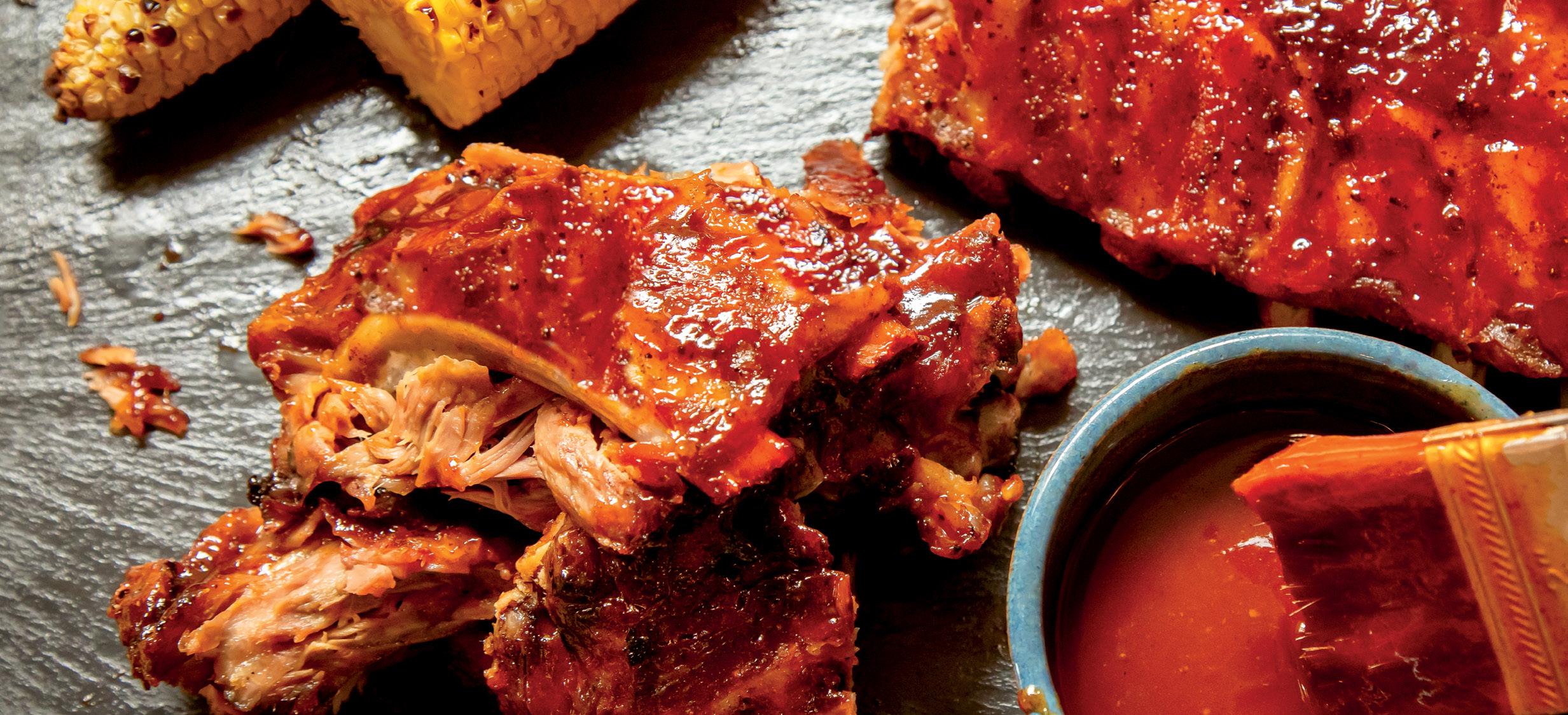
THIRD PRIZE
GT
16
SALTSCAPES RECIPE CONTEST

THIRD PRIZE
Best Back Ribs
Serves 8
Sylvia Ernst Eastern Passage, N.S.
Every grilling aficionado has their go-to recipe to sauce things up. This recipe has all the classic characteristics of a sweet and savoury sauce that will top off just about anything you grill, except berry crumble. Sylvia suggested that we try this recipe with a summer favourite, ribs.
Chef Erin roasted the ribs low and slow for five hours and did several bastings, with an extra coating before they came off the grill. Chef Brad says that the sauce had a good flavour and most people would have the ingredients in their pantry to whip it up quickly. Saltscapes videographer Ben Murray said that they were the best ribs he’d tasted.
Back Ribs sauce
1 cup (250 mL) brown sugar
1 cup (250 mL) ketchup
2/3 cup (160 mL) white vinegar
¼ cup (60 mL) Worcestershire sauce
¼ cup (60 mL) prepared mustard
1 tsp (5 mL) onion salt
1 tbsp (30 mL) chili powder pinch of cayenne pepper (or more, to taste)
Combine ingredients in a large saucepan. Bring to a boil, stirring constantly. Reduce heat and simmer for five minutes. If sauce is too thick, add water to get desired consistency. Makes about three cups.
This sauce is great for wings, ribs, chicken, fish and vegetables, and can be kept in a covered container in the fridge for several days. (Can also be frozen.)
“I revised this recipe from one I found in an old Nova Scotian cookbook,” Sylvia says. “It’s a family favourite.”












Cool #LikeABosch
Bosch refrigerators with VitaFresh® keep food fresh up to 3x longer.* Enjoy fresher fruits and vegetables and less food waster. Unleash the power of freshness in your kitchen and elevate your culinary experience to new heights.

Visit: bosch-home.ca/en/likeabosch Visit a
Daley’s Brand Source Home Furnishings 1840 Lincoln Rd. Fredericton, NB (506)458-9565 randall@daleysbrandsource.ca
Dave’s Appliance 1 Sandy Point Rd. Saint John, NB (506)634-1888 sales@davesappliance.ca
Creative Appliance Gallery 51 Raddall Ave., Unit 14 Dartmouth, NS (902)481-3313 info@creativeappliance.ca
Feron Kitchen Inc. 110 Chain Lake Dr., Unit 31 Halifax, NS (902)450-5144 • 1-800-565-4044 dferon@feronkitchens.com
MacArthur Appliances Inc. 96 Mount Edward Rd. Charlottetown, PEI (902)368-2200 macarthur@macarthurapp.pe.ca
compared to a Bosch refrigerator without VitaFresh®. Results may vary among different foods. E&OE © 2023 BSH Home Appliances Ltd. All rights reserved. Home Connect® feature on select models only.
*As
for more information
Bosch dealer
BSHBOS24020 Saltscapes StayFresh Ad v2.indd 1 2024-04-19 8:51 AMGT 17 GRAC IOUS LIVING ON THE EAST COAST

Patio Pleasers
Outside entertaining made easy (and yummy)
By Crystal Murray
Photography by Steve Smith, VisionFire
Summer is finally here and it’s time to bring those snacks outdoors. Catering chef Erin Pettipas of PastaSalt, in Pictou County, N.S., specializes in artful charcuterie boards and loves easy outdoor entertaining. She shares three of her favourite patio pleasers that whip up faster than a summer breeze.
GT 18
DOWN HOME RECIPES
Whipped ricotta with roasted tomatoes & basil
Serves 4-6
1 tub (475 g) ricotta
½ lemon, zest and juice
1 tbsp (15 mL) honey
3 tbsp (45 mL) fresh basil, chopped
½ tsp (2.5 mL) salt (or to taste)
1 pint (500 mL) cherry tomatoes
2 tbsp (30 mL) olive oil
Salt and pepper
Balsamic drizzle
Toasted bread for serving
In a small oven-safe dish, combine cherry tomatoes, olive oil, salt, and pepper and roast at 425F/218C for 20-30 minutes. Once softened and roasted, let cool. This can be done in advance and stored in the fridge until ready to serve. Just microwave gently to loosen the oil, if necessary.
In a food processor, combine ricotta with lemon zest, juice, honey, and salt. Blitz on high for about a minute, until the ricotta smoothens. Add in the chopped basil and pulse just to combine. Spread the ricotta mix onto a platter, creating a shallow well with an edge. Add the cooled roasted tomatoes. Add balsamic drizzle and garnish with extra basil. Serve with grilled bread.
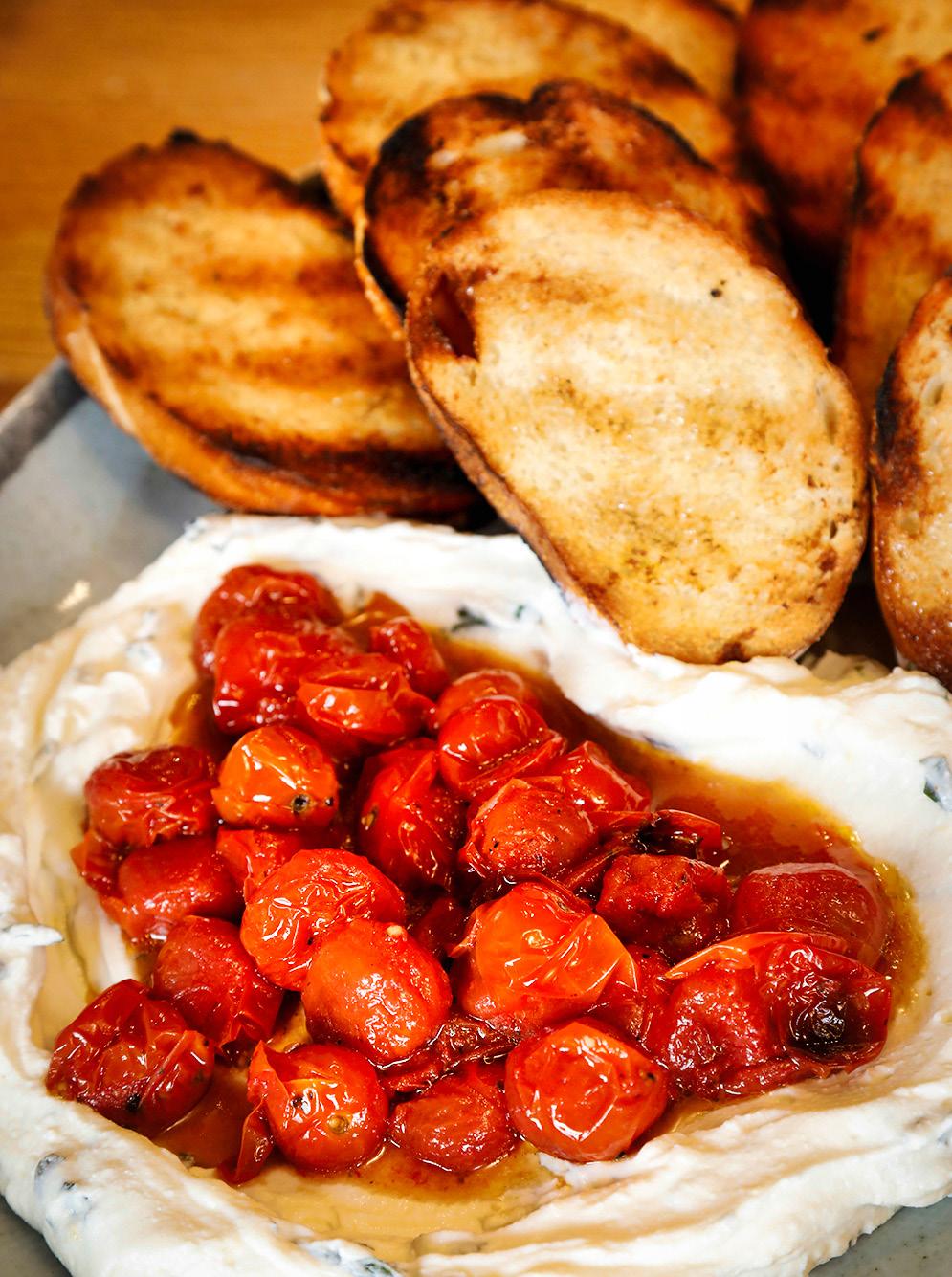

GT 19 GRACIOUS LIVING ON THE EAST COAST
DOWN HOME RECIPES
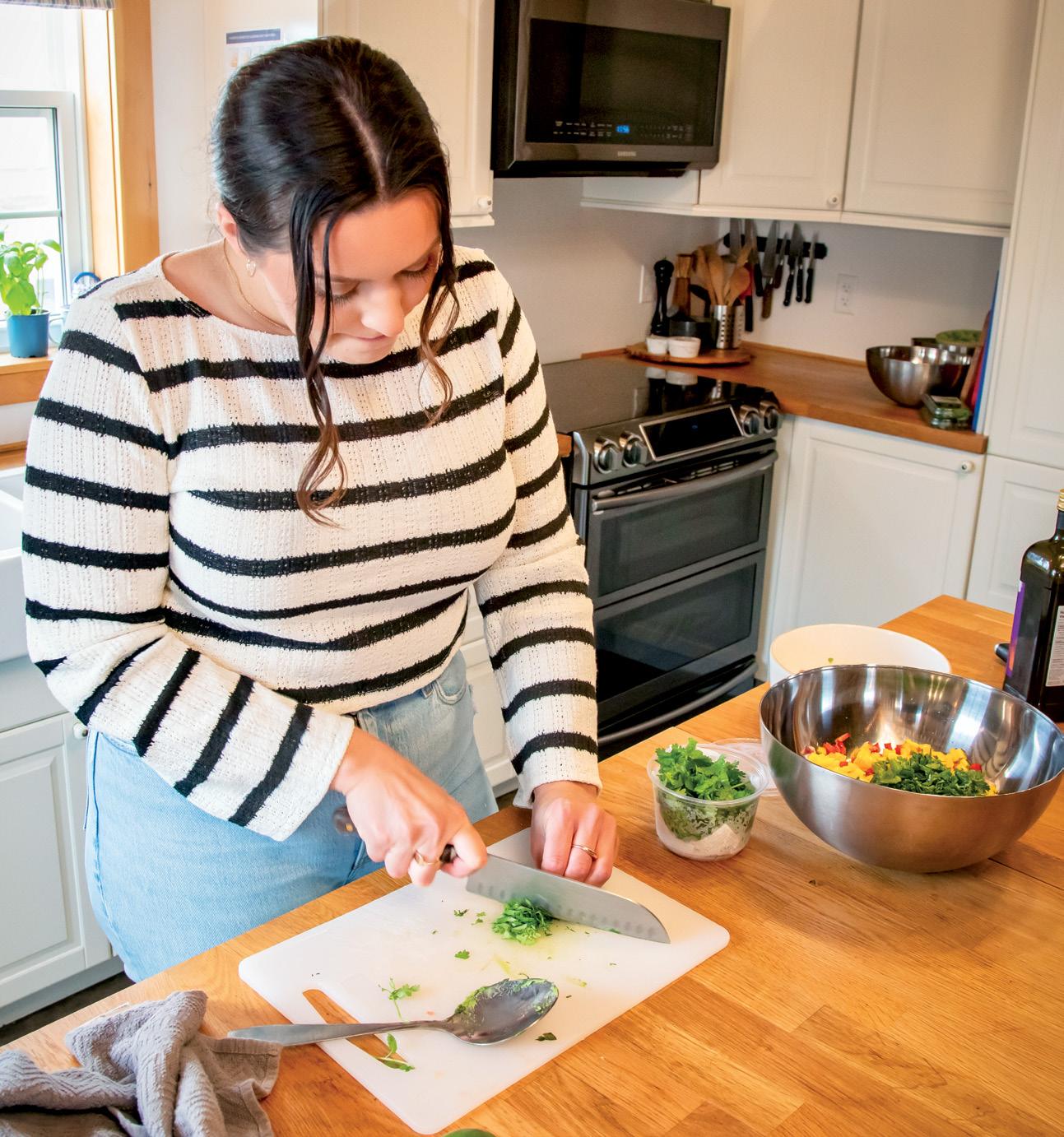
Mango Salsa
(Makes about 4 cups/1 litre)
1 mango
½ red pepper
½ English cucumber, seeded
1 avocado
½ small red onion
½ cup (125 mL) cilantro, loosely packed
1 jalapeño (optional) Juice of 1 lime
½ tsp (2.5 mL) salt (or to taste)
Chop all the ingredients into ¼-inch cubes. Add jalapeño for heat and combine with salt and lime juice. Taste for seasoning. Pairs great with tortilla chips and guacamole.
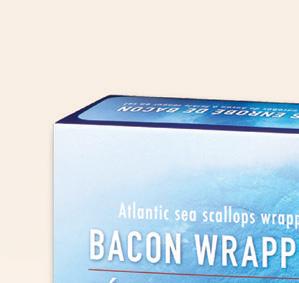




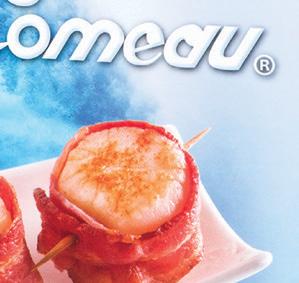











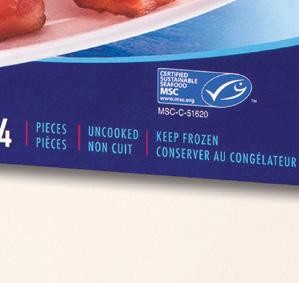




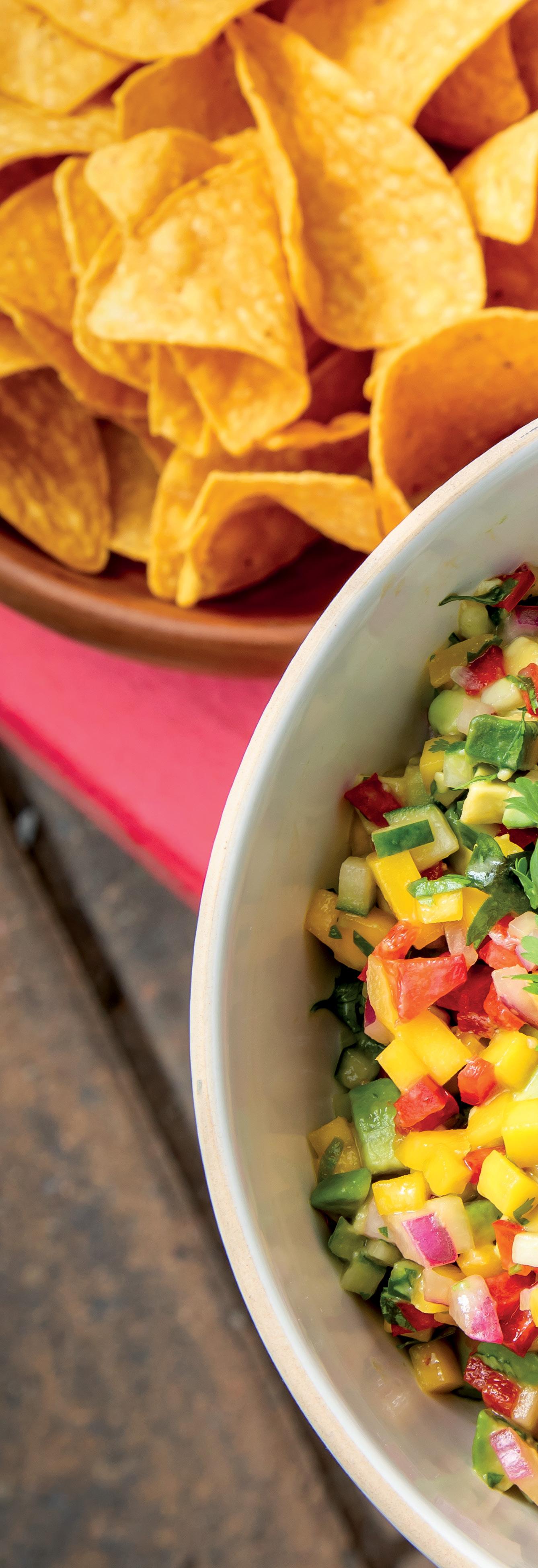

GT 20
DOWN HOME RECIPES

GT 21 GRACIOUS LIVING ON THE EAST COAST DOWN HOME RECIPES
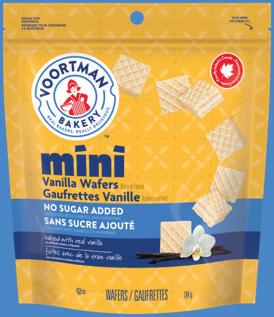





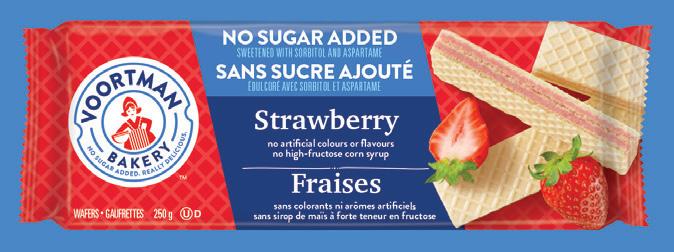







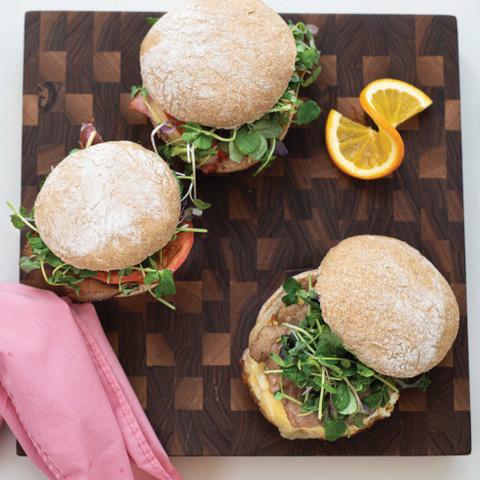

GT 22 Fresh, Local, Organic Cafe & Eatery FANCY PANTS CAFE - Dine In/Take Out Mon - Fri 7:30 - 4 | Sat & Sun 9 - 3 807 King St, Bridgewater, NS 902-530-2548 FANCY PANTS CAFE EXPRESS | 9 - 4 daily 135 North Park St, Bridgewater, NS (Located in the LCLC) 902-530-4114 The Delicious Way to Care About Sugar Delightfully light & delicious, with real ingredients like vanilla, strawberries & cocoa.

Prosciutto & Melon Board
Prosciutto and melon are a classic pairing, a perfect combination of savoury and sweet, and refreshing for a hot summer’s day. For the uninitiated, burrata is, as Erin describes it, “a delicious ball of mozzarella stuffed with creamy cheese curds, light and mild, and delicious with pesto.”
watermelon (sliced, about the same amount as other melons) cantaloupe (½ balled, ½ cut into wedges) honeydew (½ balled, ½ cut into wedges) 10 oz/300 grams prosciutto fresh basil basil pesto burrata fresh mozzarella 1 tub (200 mL) mini (pearl size) bocconcini
Using a melon baller, scoop honeydew and cantaloupe into balls. Combine with a big handful of bocconcini and toss with fresh chopped basil. Slice the rest of the cantaloupe and honeydew into wedges and wrap with prosciutto. Arrange sliced watermelon, honeydew, and cantaloupe wedges on a platter with sliced mozzarella and a ball of burrata. Fill in the spaces with the balled melons and bocconcini, garnish with basil and serve with basil pesto.
GT 23 GRACIOUS LIVING ON THE EAST COAST
DOWN HOME RECIPES

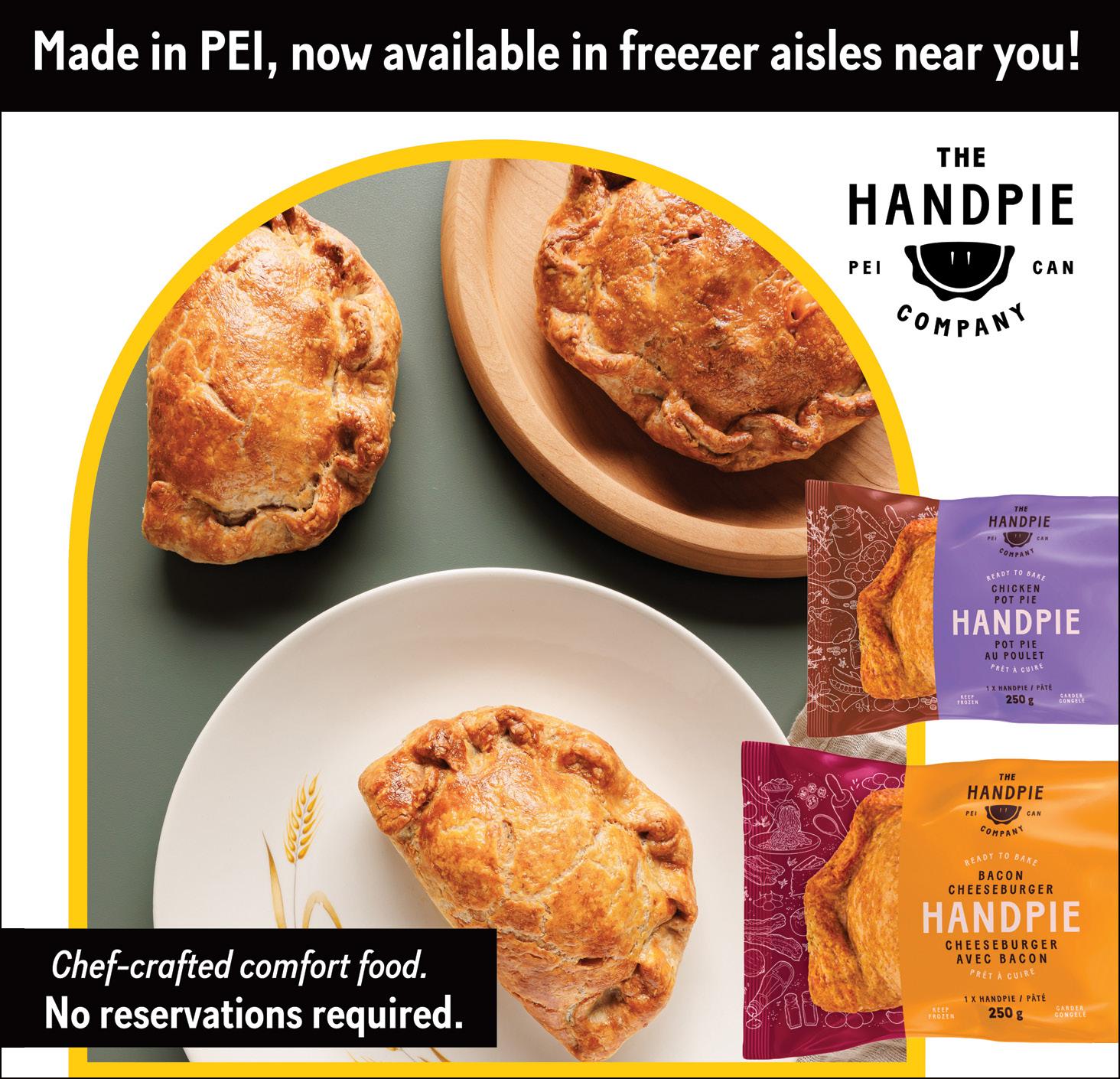















Enhance your home Come visit our Outlet this summer in East Margaree, NS. ★ Made Right Here ★


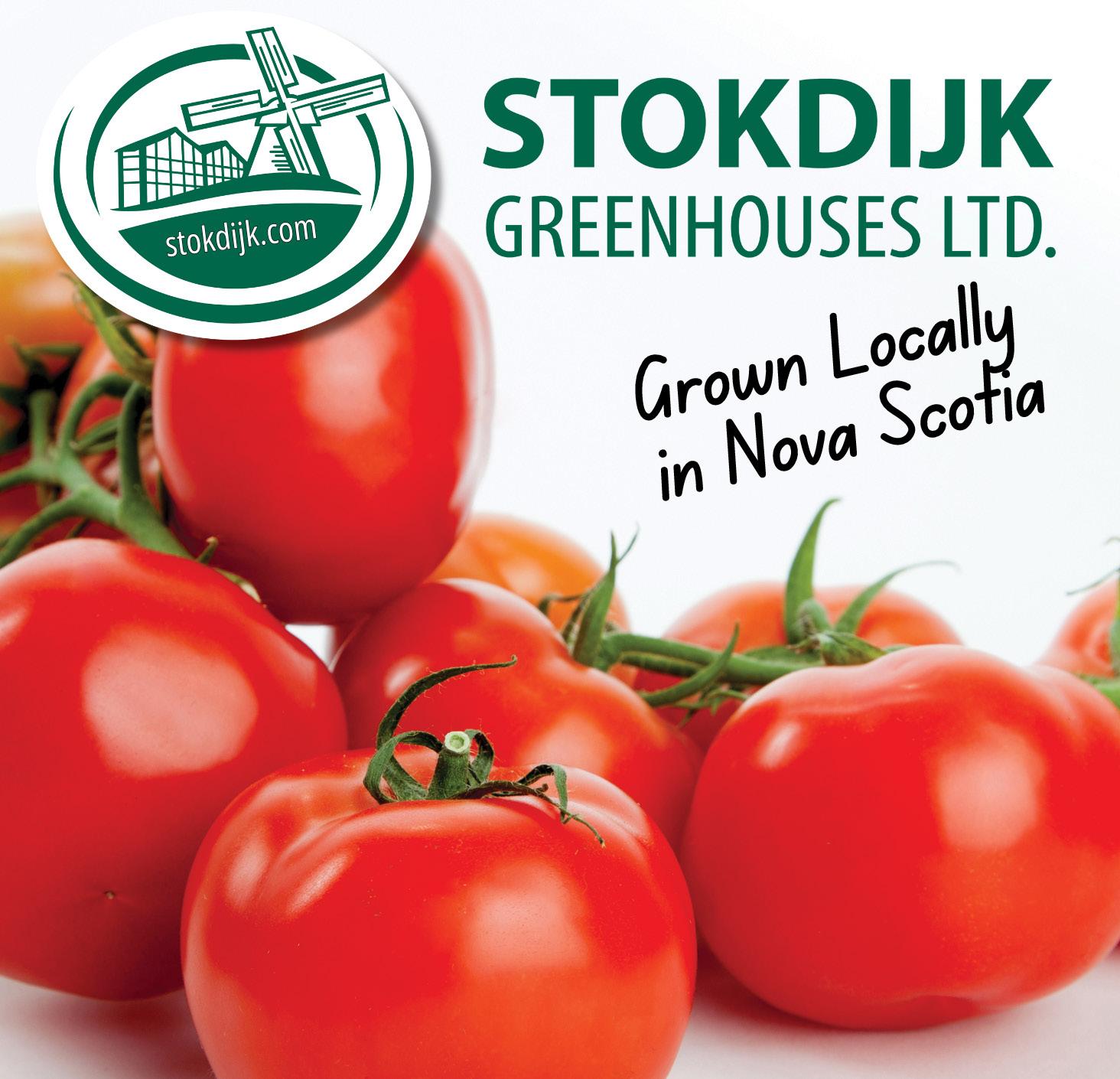










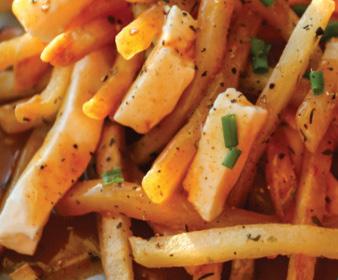

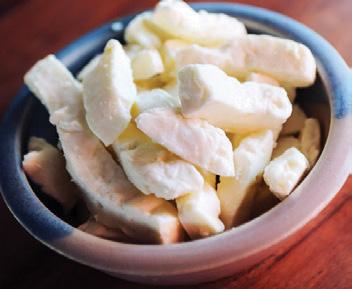
 Made with Maritime Milk
Made with Maritime Milk
Carb Up!

The delicious art of eggs, flour, and water
Story by Colleen Thompson
Ibought bought a shiny pasta maker a decade ago on a trip to Florence, Italy, determined to channel my inner Italian grandmother or nonna and create fresh pasta with romantic names like cavatelli and orecchiette when I returned home. The shiny hand-cranked Marcato never made it out of the kitchen cupboard. But I clung to it, refusing to chuck it out and my dreams of becoming a pastaia along with it.
Fast forward to the pandemic. While I also fell for the sourdough mania
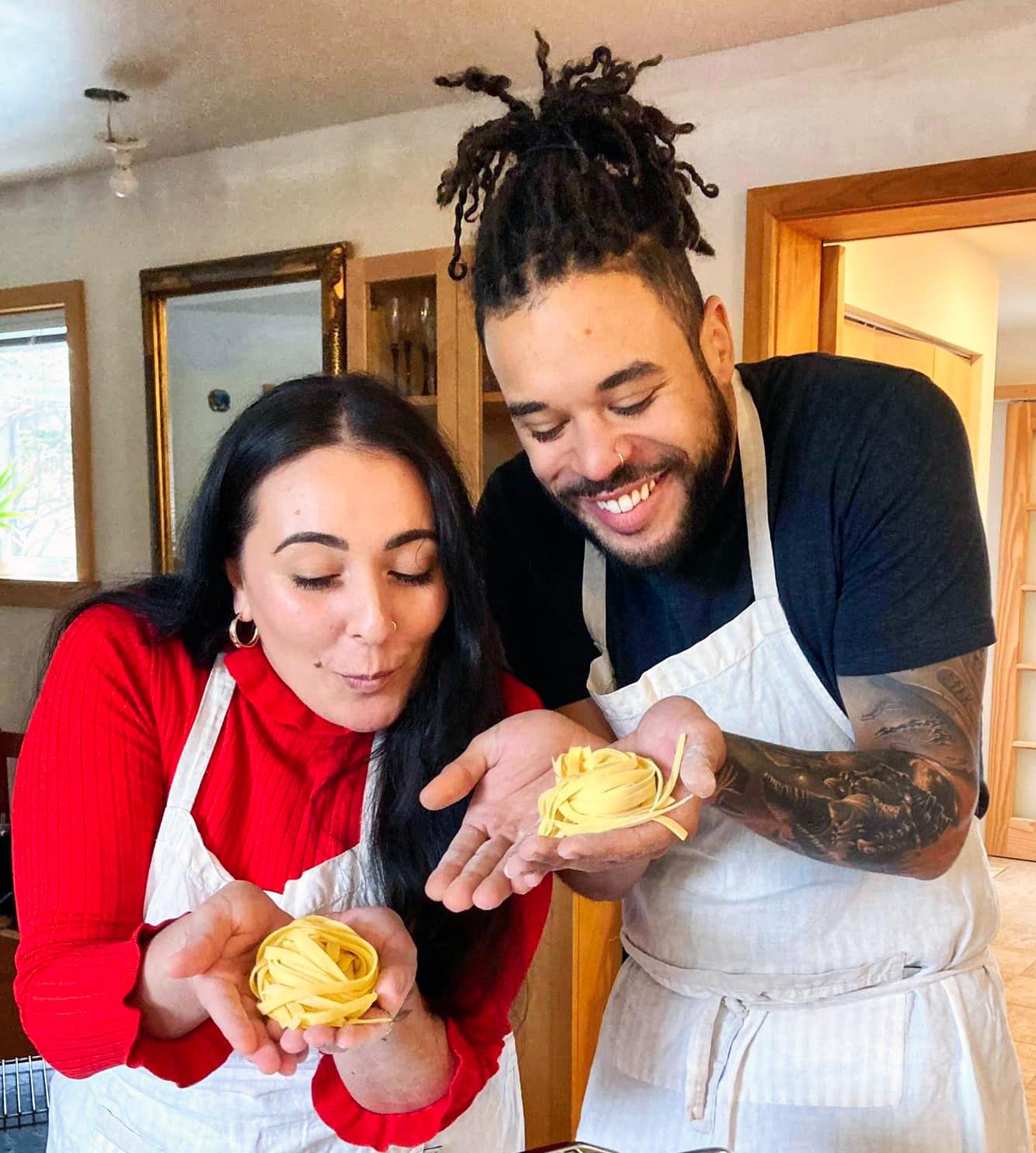
and named my starter Florence, what resonated most was pasta making. I hauled out my now less-shiny pasta maker, stocked up on 00 flour and began the tactile pleasure of “fatto a mano” or handmade pasta making. With a nice glass of Valpolicella in hand and a curated Italian playlist on rotation in the background, the simple, meditative act of kneading dough is a beautiful way to spend time that rewards you with a delicious meal afterwards.
It turns out I’m not alone.
The humbly delicious mixture of eggs and flour passed down from the Etruscans has increased in popularity during and since the pandemic. It’s hard to miss a cursory scroll through Instagram without seeing creations of colourful artistic pasta, awash with hashtags #choosepasta #pastamania and #girlswithgluten. The fascination has also spawned a range of recently published cookbooks like Flour + Water by Thomas McNaughton, Kaura Goodman’s Carbs, and The Pasta Codex by Vincenzo Buonassisi, featuring 1,001 pasta recipes.
What’s behind the renewed interest?
“The pandemic taught many of us how important it is to stay healthy. So, home-cooked meals with fewer industrial and more local products garnered attention. People started looking for nutritious and delicious foods and a way to get them from our local stores and markets. And what’s better than pasta? It’s just happiness in a dish,” says Roberta Mesquita, owner of Paolucci Pasta.
Roberta learned how to make pasta with her Italian grandmother 20 years ago. Paolucci is her maiden name, and as
Participants at a pasta-making class admire their handiwork.
GT 26
PRODUCER TO PLATE NATALIA GARTLEY, HANDSONFRESHPASTA.COM SUBMITTED ILLUSTRATION: BIGSTOCK
with most Italian families, food is at the centre of every gathering and event.
“I come from a long line of excellent cooks, and I’ve always loved to cook as a hobby, but never thought I would work in the food industry,” says Mesquita. “I have a bachelor’s in communications and had my social media business in Brazil for almost a decade before I moved to Canada. But life brings many surprises our way, and I had the opportunity to become a vendor at the Halifax Brewery Market about eight months ago. I couldn’t think of a better thing to sell than handmade pasta. And that’s how Paolucci Pasta was created.”
There is nothing not to love about Paolucci Pasta. The menu alone will have you drooling: handmade fettuccine smothered in rose sauce or enrobed with vibrant pistachio pesto, parcels of ravioli stuffed with asiago and walnuts, or buttercup squash and rosemary.
“The most important element in any food-making process is to have fresh and local products; pasta is no different. I look for local eggs and local suppliers for most of my ingredients, making a world of difference in the finished product,” explains Mesquita. “Making pasta is time-consuming, so take it slow, use fresh eggs and talk to me about a pasta lesson.”
Pasta aficionado and foodie Natalia Gartley, who lives in Granville Ferry, N.S., with her husband and six chickens, offers private, hands-on pasta-making experiences for small groups of two to six people. “There is an absolute joy in learning a new skill, which has the added benefit of being delicious. It’s also a lifetime skill that the entire family can participate in,” says Gartley, who moved to Nova Scotia from British Columbia shortly before the pandemic hit. “Making pasta helped me to stay busy. My freezer was full of pasta, my friends were given pasta, and I couldn’t stop making it because it is so addictive, in a good way. Then my friends wanted to learn how to make pasta, and bingo, my business, Hands on Fresh Pasta, was born,” says Gartley, who offers private, hands-on pasta-making experiences for small groups from two to six people, “where people know each other and feel comfortable being around each other. There is a real joy in learning a new skill,

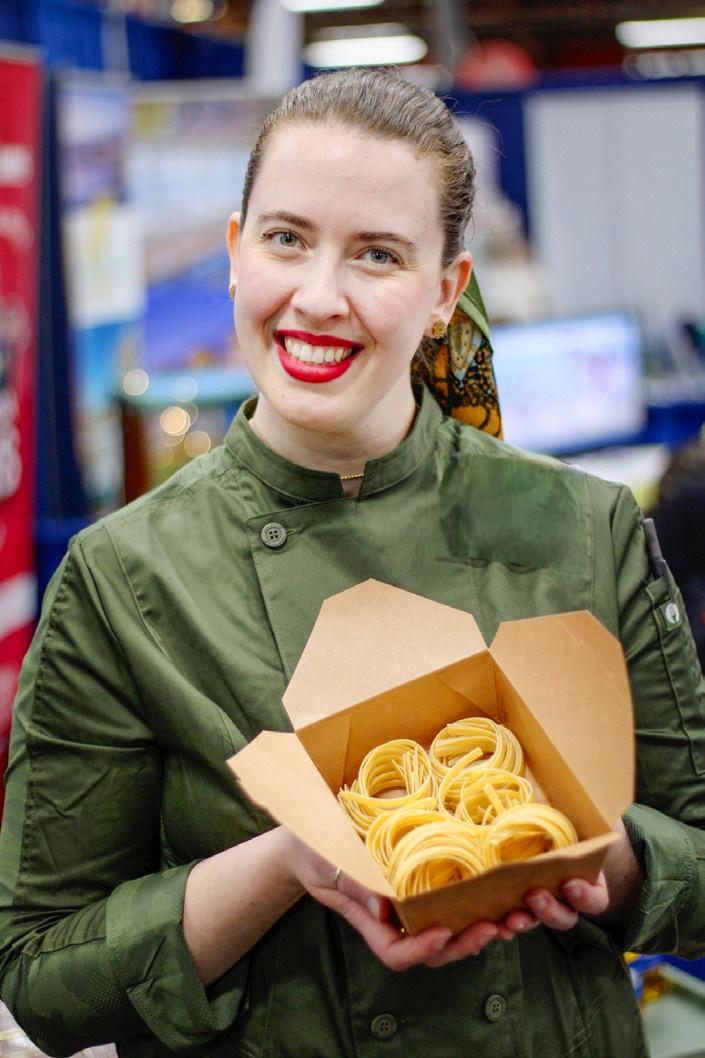
which has the added benefit of being delicious. It’s also a lifetime skill that the entire family can participate in.”
Chef and owner Michael Dolente opened the artisan pasta bar Maria’s Pantry right as the pandemic hit in 2020. Paying tribute to his Italian nonna, Maria, Dolente makes all pasta by hand. The popularity and word-of-mouth interest in this tiny spot in downtown Dartmouth affirms the interest in handmade,
authentic pasta. “Because we opened during the pandemic, we focused on making fresh pasta that people could purchase and cook at home. It became successful because everyone was staying home. We’ve continued to shift more into this in this direction, rather than inhouse dining, because people still want to cook fresh pasta at home.”
On opening days, Friday and Saturday lunch, it is difficult to get a table at Maria’s as diners turn to fresh campanelli with pesto cream and silky layers of classic carbonara. “The carbonara is probably our most popular dish. And while you can find many versions around, ours never diverts from the classic, which consists of homemade guanciale, pecorino and parmesan cheese, and fresh homemade bucatini.”
You don’t need to be an Italian nonna, a pasta aficionado, or a chef to make fresh, simple pasta. In less than an hour, you can whip up delicious farfalle with only your hands, a rolling pin, and essential ingredients like eggs, flour, salt, and olive oil. However, there are some basic tips worth noting.
Fresh pasta can be made with eggs, known as Pasta Fresca all'Uovo or without, known as Pasta Fresca di Semolina (fresh durum wheat semolina pasta).
The pasta rule of thumb is one egg for every 100 grams of flour. But the
GT 27 GRACIOUS LIVING ON THE EAST COAST PRODUCER TO PLATE
GARTLEY, HANDSONFRESHPASTA.COM
Above: Natalia Gartley and friends in the kitchen. Below: Roberta Mesquita shows off some fresh pasta.
NATALIA
SUBMITTED
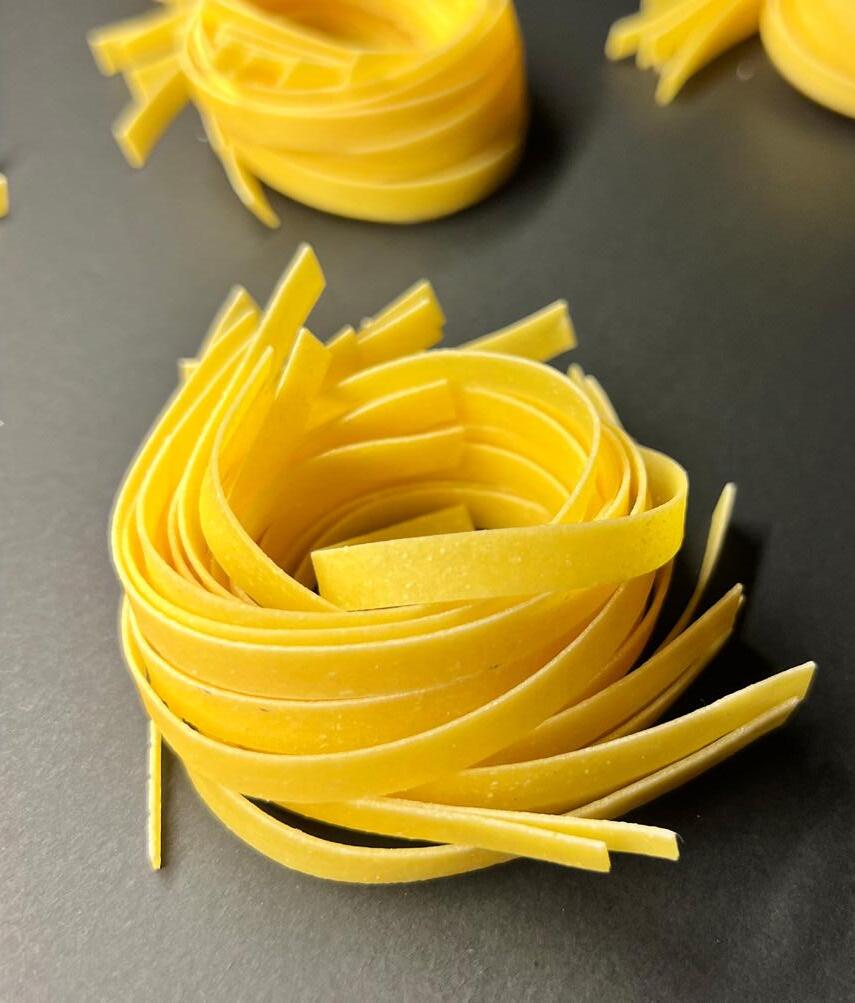
exact proportions may vary depending upon the room’s humidity, the flour’s age, and the time of year, so you must pay attention to the dough and let your instincts guide you. “I like to use half semolina and half all-purpose flour for a firmer texture for noodles like fettuccine,” says Dolente. “If you’re making a filled pasta, you may want to use all all-purpose or 00 flour instead of the semolina for a softer bite.”
“Italian pasta is all about texture,” explains Gartley. “It is never too soft and has a bite to it because Italian flour is higher in protein than regular all-purpose flour. Flour 00 is soft; semolina, or durum wheat flour, is hard. Vegan pasta is always made with durum flour because it is made without eggs but can still deliver the perfect texture.”
Use the traditional method of creating a well in the flour’s centre and add the eggs and salt. Use your fingers to draw the flour slowly into the liquid, ensuring the right amount of liquid is incorporated into the flour before forming and kneading the dough.
“Practise a lot. You will get better every time,” says Chef Dolente. “Fresh, high-quality ingredients and tools help. Use local free-range eggs and durum semolina flour. A good quality pasta machine and bronze cutters are great for texture. Use a good recipe that works, but always be able to adapt it as humidity changes all the time within the flour, and you need to recognise when to use more flour and water. Try new things, and always be eager to try different shapes, flavour combinations, and ingredients.”

Hands-On Farfalle
Makes 40-42 Farfalle
1 cup (250 mL) Semola Rimacinata flour (durum flour) ¼ cup (60 mL) water (lukewarm) Pinch of salt
Begin with flour. You can use a mixing bowl for convenience. If you wish to make coloured pasta, add 1 tsp (5 mL) of a colour of your choice (spinach, turmeric, tomato paste, etc.) to the flour. Make a well in the centre of the flour and add water. Mix. Once the dough becomes too thick to whisk with a fork, turn out onto a clean work surface, along with any leftover flour from the bowl. Knead dough and remaining flour until you’ve got a smooth dough ball. It usually takes up to 8-10 minutes.
Let the dough rest by covering it with the bowl and leaving it at room temperature for 30 minutes. It's important to always complete this step.
Divide the dough in half. Work with one portion at a time, leaving the remaining dough covered with plastic or a bowl to prevent it from drying out.
Roll out the pasta dough using a rolling pin (to about 2mm thick) or pasta maker.
Cut into small rectangles, squares 3.5 cm x 3.5 cm. Fold in half, fold each side again, and pinch in the centre to form the butterfly’s wings.
Once all farfalle are made, drop them into boiling salted water to cook (about 2 minutes) or else freeze. If freezing, transfer frozen farfalle to an air-tight freezer bag or container for storage. It can be stored in the freezer for up to 2 months.
When you cook frozen pasta, just drop it into boiling water. There is no need to defrost it. Remember to salt the water once it comes to the boil. Don’t overcook the pasta. It should be al dente.
Serve with your favourite sauce, Parmesan cheese and drizzle with extra virgin olive oil.
GT 28 PRODUCER TO PLATE
SUBMITTED
Paolucci Rose Sauce
Makes 4 generous servings
1 lb (.5 kg) Roma tomatoes
2 large onions, diced
1 red bell pepper, diced
1 bunch of green onions, sliced
1 head of garlic, finely minced
1 cup (250 mL) whipping cream
½ cup (125 mL) mozzarella cheese
1 tsp (5 mL) sugar
1 cup (250 mL) red wine
½ tsp (2.5 mL) cumin
1 tsp (5 mL) paprika
½ tsp (2.5 mL) nutmeg
Pinch Indian clove
Slice the tomatoes in half and add them to a pan to cook. Stir every now and again so they don't stick to the bottom. Once they are cooked, remove the peels (optional) and blend them.
In another large pot over medium heat, add some olive oil and wait for the oil to warm up a little; add the garlic and wait for it to turn golden brown. Add onions and green onions and wait for them to turn translucent. Add bell pepper; after a minute, add blended tomato sauce, sugar, and spices to season to taste. Add wine, reduce the heat to low and let it simmer for about 25 min. Blend if you want a smooth sauce, or leave it as is for a chunkier texture. Add the cream and the mozzarella cheese, and you are all done!

Easy Egg Pasta
Makes 4 Servings
2 cups (500 mL) all-purpose flour
½ tsp (2.5 mL) salt
2 large eggs Semolina flour for dusting
Create a well in the centre of the flour. Add salt and eggs. Using a fork, gently break up the eggs. Use your fingers to mix the flour into the liquid until combined. Bring dough into a ball. If dough seems dry or crumbly, add 1 or 2 tablespoons of cold water, but only enough to keep it together.
Knead for 10 minutes until dough becomes a smooth, golden ball. Wrap in plastic and allow it to rest for 1 hour. Put through a pasta cutter into desired width.


Pesto Verde
Makes 4 Servings
2 cups (500 mL) greens of your choice (fresh basil, arugula, or spinach)
½ cup (125 mL) good extra virgin olive oil
1-2 garlic cloves
½ tsp (2.5 mL) salt (add more if needed at the end)
½ cup (125 mL) Parmesan 1/3 cup (80 mL) pine nuts or any nuts of your choice except peanuts
1 tbsp (15 mL) lemon juice (or to taste)
To make pesto, combine all ingredients in a blender.
GT 29 GRACIOUS LIVING ON THE EAST COAST
PRODUCER TO PLATE
SUBMITTED SUBMITTED BIGSTOCK
Kettle-cooked for the perfect flavour and crunch.
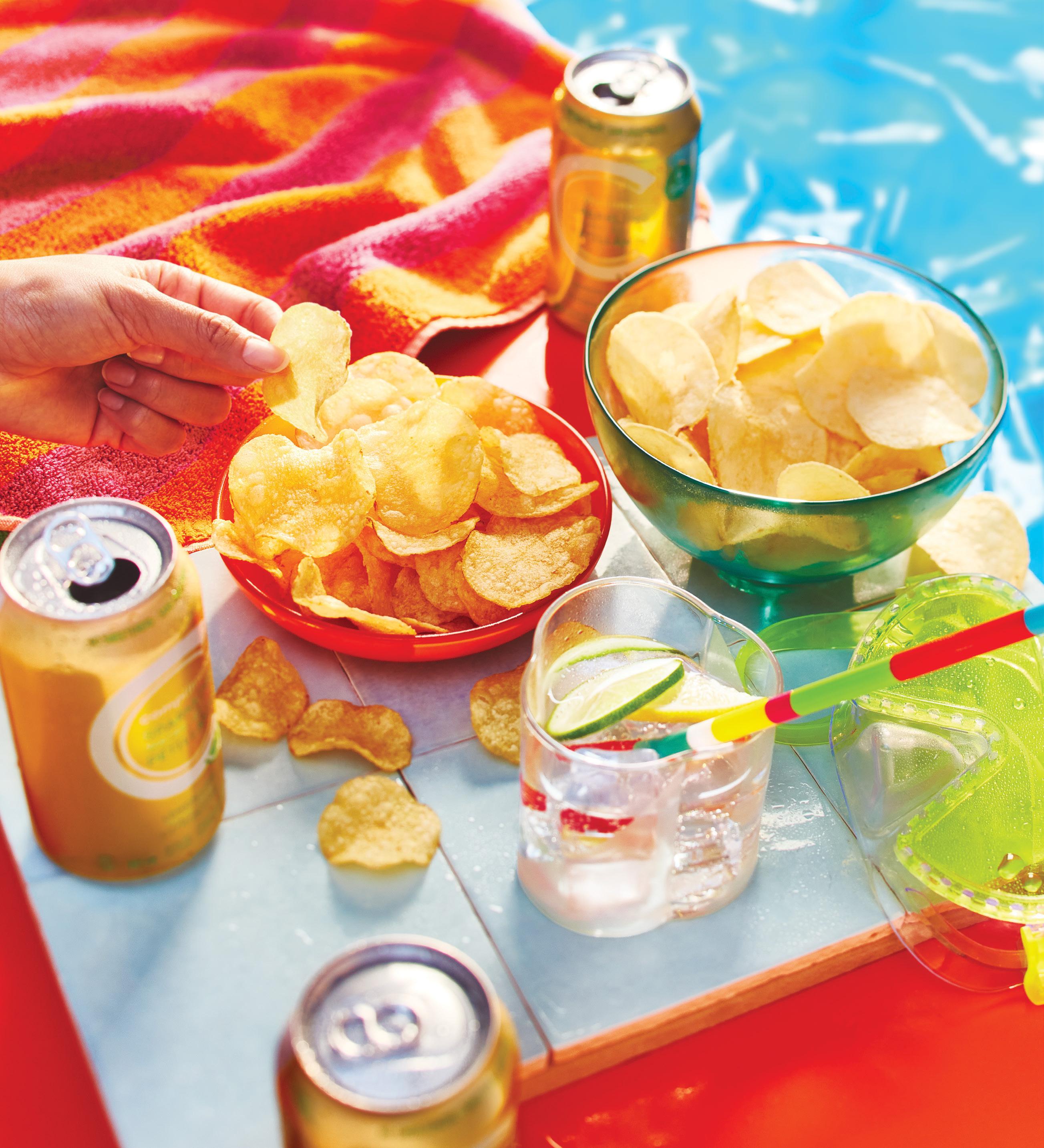


at
Available

1.800.236.9526 | advocateprinting.com Contact a business solutions team member today to get started! Whether you’re looking to nurture growth, enhance operations, communicate clearly and creatively, or showcase your business, we’re here to create a solution to fit your organization’s unique needs. As a proud Atlantic Canadian company, we believe in building genuine connections by deeply understanding your business and community. Our commitment to create value begins with getting to know you better. Build your brand




















2024
CROSSTREK WILDERNESS



































Behold the indominable beast that is the All-New 2024 Crosstrek Wilderness. Take on new trails with durable all-terrain tires with black painted 17" aluminum alloy wheels, increased ground clearance and rugged body cladding for added protection. Confidently explore uncharted territory with legendary Symmetrical Full-Time AWD and Enhanced Dual-Function X-MODE®. Enhanced EyeSight® Driver Assist Technology also comes standard to ensure safe exploration. Top it all off with a spacious and well-appointed comfortable interior from a manufacturer with a reputation for enduring quality and dependability. Book a test drive at your local Atlantic Subaru dealer today.















Model shown is 2024 Crosstrek Wilderness 2.5-L Turbocharged DI, 182-hp CVT (RXA WP). Dealers may sell for less or may have to order or trade. Vehicle shown solely for purposes of illustration and may not be equipped exactly as shown. 2024 Crosstrek Wilderness 2.5-L Turbocharged DI, 182-hp CVT (RXA WP) engine available on select trim levels only. EyeSight® is a driver-assist system, which may not operate optimally under all driving conditions. The driver is always responsible for safe and attentive driving. System effectiveness depends on many factors such as vehicle maintenance, and weather and road conditions.
Owner’s Manual for complete details on system operation and limitations. See your local Atlantic Subaru dealer for complete details. Ratings are awarded by the Insurance Institute for Highway Safety
for testing methods. Subaru and Crosstrek are registered trademarks.
See
(IIHS). Please visit www.iihs.org


































































































































































 Made with Maritime Milk
Made with Maritime Milk

































































